The United Arab Emirates (UAE) is home to a vast array of amazing bird species, some of which are endemic to the area. From magnificent eagles to tiny finches, these birds each have unique features that attract bird watchers and photographers from all over the world.
The UAE has many protected areas, giving these birds a safe refuge to inhabit and breed. Whether you’re an experienced birder or a novice, there’s something for everyone to observe in the UAE.
From the vibrant pink flamingos to the graceful falcons, the UAE has a bird population that is sure to please.
1. Shorebirds
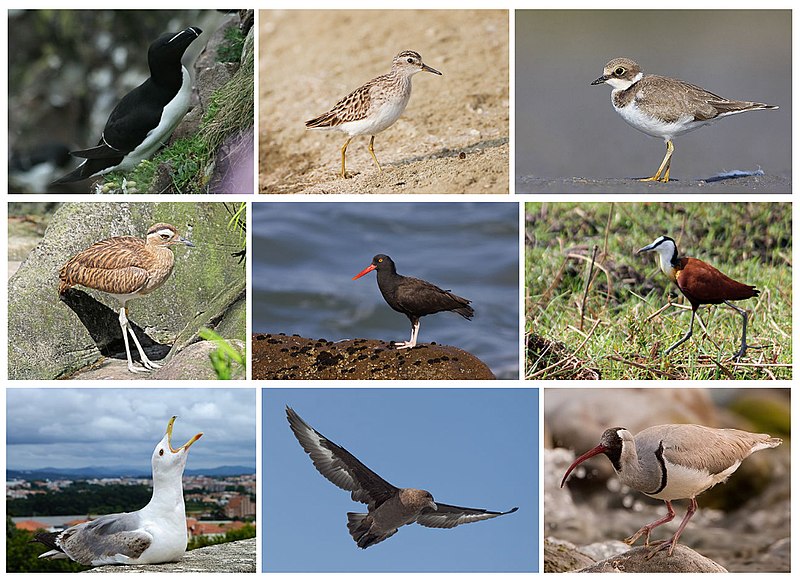
Shorebirds, a diverse group of birds in the Charadriiformes order, are found near water on every continent except Antarctica.
These small to medium-sized birds feed mainly on invertebrates and other small animals but can also be pelagic seabirds or inhabit deserts.
Shorebirds use their long bills to probe mudflats for food like worms and mollusks while some species plunge into the ocean’s depths in search of crustaceans such as crabs and shrimp.
They have strong legs equipped with webbed feet which allow them to move quickly when searching for prey across wetlands, sandbars, beaches and swamps.
Their feathers make them well adapted to life by land or sea due to its hydrophobic nature which helps reduce drag during swimming or flying through windy conditions making it easier for shorebirds survive tough environments around the world.
Scientific classification:
| Kingdom | Animalia |
| Phylum | Chordata |
| Class | Aves |
| Infraclass | Neognathae |
| Clade | Neoaves |
| Clade | Gruimorphae |
| Order | Charadriiformes Huxley, 1867 |
2. Skuas
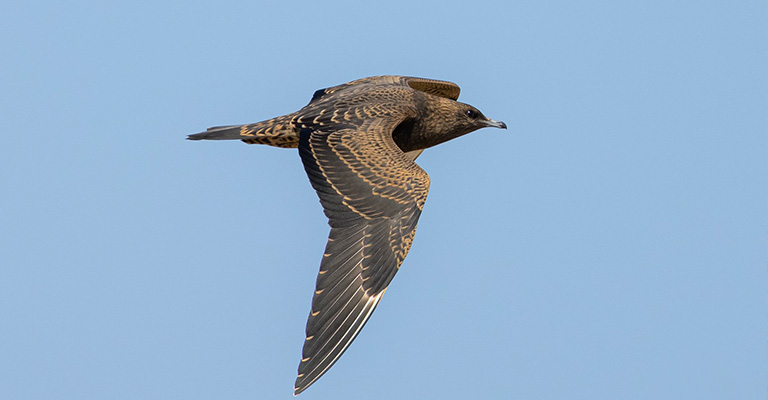
Skuas are a group of predatory seabirds with seven species, all belonging to the genus Stercorarius.
They are also known as “Jaegers” in North America and their name originates from the Faroese word for Great Skua – skúgvur.
These birds typically inhabit coastal areas or open oceans where they feed on fish, krill and other marine creatures.
Skuas can be distinguished by their pointed wings which help them fly long distances while hunting food.
Their distinctive colouration varies depending on age and habitat but generally includes greyish brown upperparts and white underparts with black streaks along its belly area.
The overall size ranges from 24-40 cm making these one of the larger sea bird species.
Scientific classification:
| Kingdom | Animalia |
| Phylum | Chordata |
| Class | Aves |
| Order | Charadriiformes |
| Suborder | Lari |
| Family | Stercorariidae Gray, 1871 |
| Genus | Stercorarius Brisson, 1760 |
3. Sandgrouse
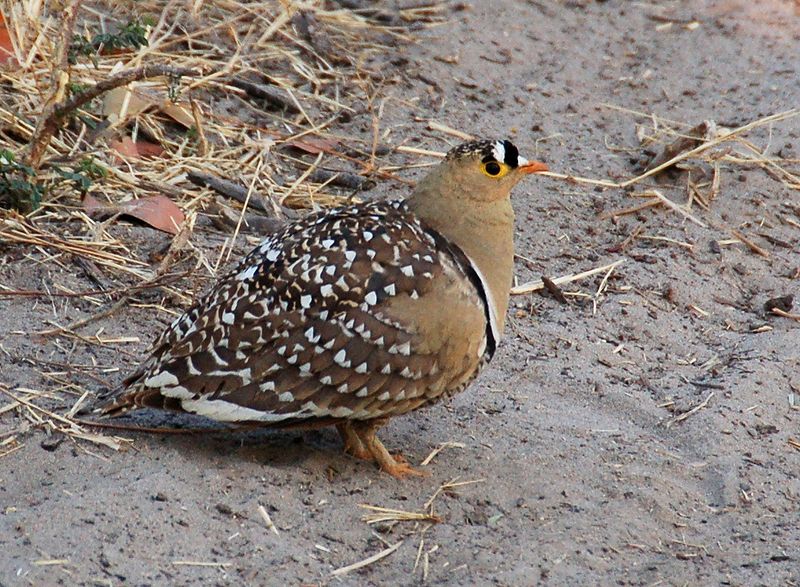
Sandgrouse is birds of the order Pterocliformes, found mainly in Africa and Asia. There are sixteen species belonging to two genera – Syrrhaptes from central Asia and Pterocles from Africa and other Asian countries.
They inhabit treeless areas such as deserts, steppes, scrubland, or savannas and tend to be ground-dwelling birds that feed on seeds.
Sandgrouse has adapted special features for survival in their harsh environment.
They possess well-developed feet with four toes used for walking over hot sand while keeping their body temperature cool at all times by regulating heat loss through their legs.
Their feathers also act like a sponge helping them absorb water before flying long distances back home where they then expel it using specialized glandular secretions located near the wings so that chicks can drink directly from an adult’s breast plumage.
Scientific classification:
| Kingdom | Animalia |
| Phylum | Chordata |
| Class | Aves |
| Clade | Columbimorphae |
| Order | Pterocliformes Huxley, 1868 |
| Family | Pteroclidae Bonaparte, 1831 |
4. Bustard
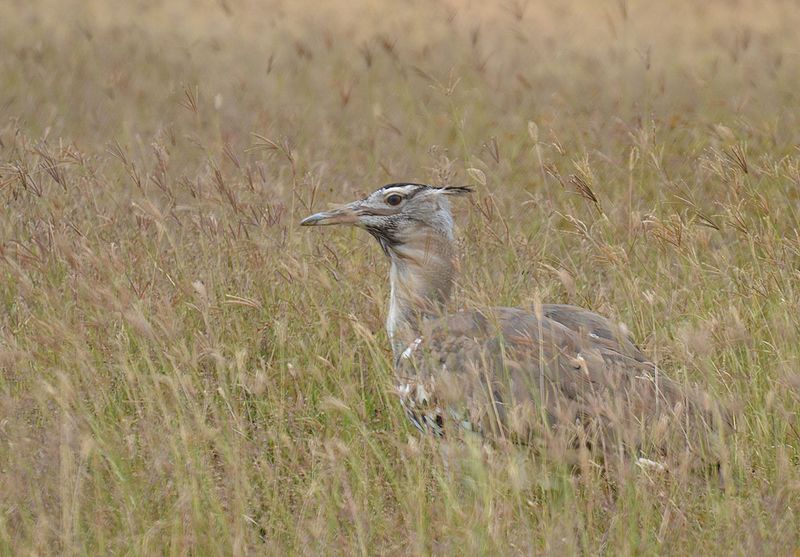
Bustards are large, terrestrial birds that inhabit dry grassland areas and the steppes of the Old World. They range from 40-150 cm in length and belong to the family Otididae.
Bustards have an omnivorous diet consisting of leaves, buds, seeds, fruit as well as small vertebrates and invertebrates.
These birds usually live a solitary life but can be seen gathering around water sources or food during certain times of year such as mating season.
Due to their large size they are vulnerable to predation by foxes or other animals which is why they tend to remain alert at all times.
When in open spaces while relying on camouflage for protection against predators when out in tall vegetation coverings.
Scientific classification:
| Kingdom | Animalia |
| Phylum | Chordata |
| Class | Aves |
| Clade | Otidimorphae |
| Order | Otidiformes Wagler, 1830 |
| Family | Otididae Rafinesque, 1815 |
5. Sylviid Warblers
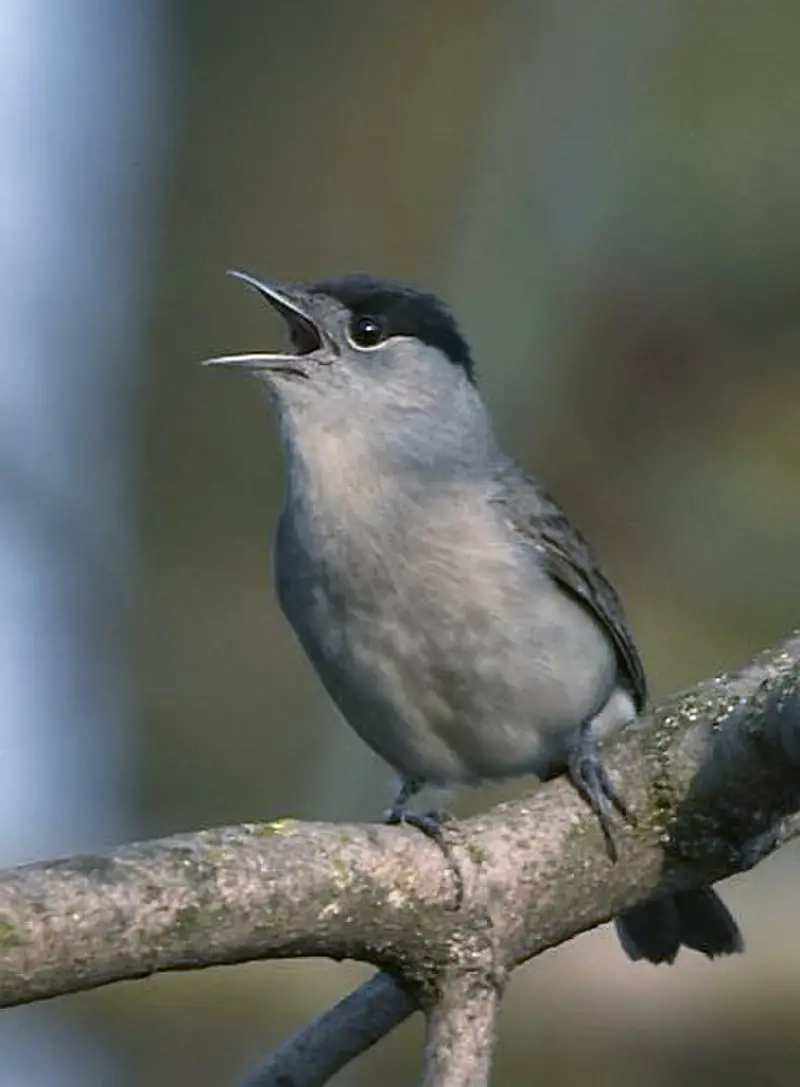
The Sylviid warblers are a family of passerine birds found in Eurasia and Africa. They include the typical warblers as well as babblers that were formerly part of the Old World babbler family.
These birds have slender bodies, pointed wings, long tails and strong legs adapted for ground-dwelling habits like running or hopping along branches.
The male often has bright colors while females are usually duller in coloration with more muted plumage patterns than males.
Some species also show sexual dimorphism where one sex may be larger or smaller than its counterpart; for instance some species may have longer tail feathers on the female side compared to their male counterparts.
Many members of this group feed on insects but some specialize on seeds, fruits, nectar or even frogs.
Scientific classification:
| Kingdom | Animalia |
| Phylum | Chordata |
| Class | Aves |
| Order | Passeriformes |
| Superfamily | Sylvioidea |
| Family | Sylviidae Leach, 1820 |
6. Shrike
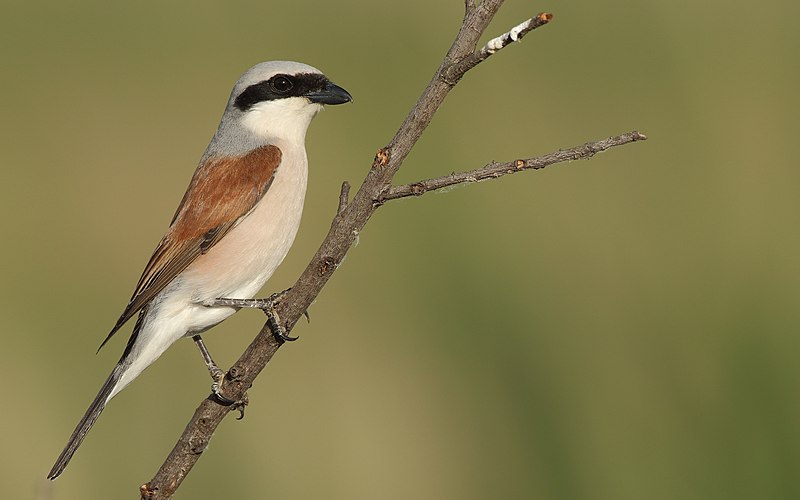
Shrikes are small passerine birds of the family Laniidae, with 34 species in four genera. They get their name from Old English word “scrīc”, which refers to their shriek-like call.
These birds have earned the nickname ‘butcherbirds’ due to their feeding habits; they impale prey on thorns or barbed wire fences for later consumption.
Shrikes also tend to be aggressive predators and hunt a wide range of animals such as insects, small reptiles, rodents and even other smaller bird species.
In terms of physical appearance, these songbirds can vary greatly depending on the specific genus but usually boast a large hooked bill atop an impressive crest along with bright colors like gray, black or brownish hues across its feathers.
It’s clear shrike is quite remarkable creature that has gained notoriety for both hunting prowess and distinctive vocalizations.
Scientific classification:
| Kingdom | Animalia |
| Phylum | Chordata |
| Class | Aves |
| Order | Passeriformes |
| Superfamily | Corvoidea |
| Family | Laniidae Rafinesque, 1815 |
7. Crab-Plover
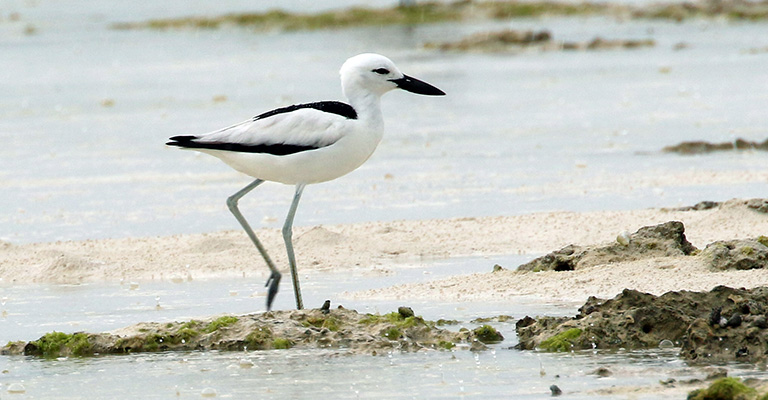
The crab-plover is an exceptional bird which belongs to its own family, Dromadidae. It appears to be closely related to the waders and other Charadriiformes such as auks, gulls and thick-knees.
This species of bird has a unique look; it is white with black markings on its head and wings. Its long bill helps them dig for food in sand or mudflats.
They can also fly up into the air when disturbed by predators or people too close for comfort.
The crab plover spends most of its life near beaches where they feed on crabs, fish eggs and small insects found there.
These birds are highly social during breeding season but solitary at other times throughout their annual cycle making them difficult creatures to spot out in the wild but well worth trying.
Scientific classification:
| Kingdom | Animalia |
| Phylum | Chordata |
| Class | Aves |
| Order | Charadriiformes |
| Suborder | Lari |
| Family | Dromadidae GR Gray, 1840 |
| Genus | Dromas Paykull, 1805 |
| Species | D. ardeola |
8. Hoopoes
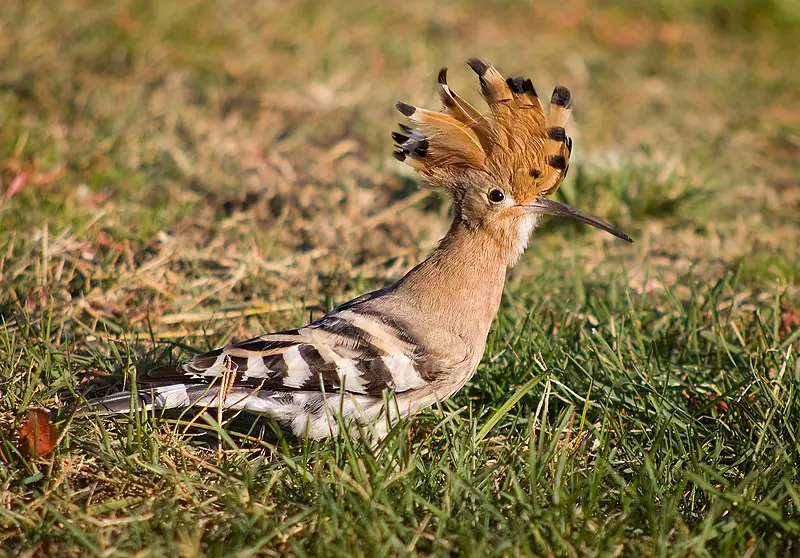
Hoopoes are a fascinating species of bird, found across Africa, Asia and Europe. They have beautiful plumage with unique ‘crowns’ of feathers on their heads.
Three living and one extinct species exist – although for some time they were all classed as the same species: Upupa epops. Some taxonomists still believe this to be true.
These birds are often associated with royalty due to the impressive crown-like crest atop their head, adding an extra element of mystery and exoticism to these creatures.
Hoopoes can also produce loud calls which sound like “hoo-poo” hence why they’ve been given such an apt name.
Scientific classification:
| Kingdom | Animalia |
| Phylum | Chordata |
| Class | Aves |
| Order | Bucerotiformes |
| Family | Upupidae Leach, 1820 |
| Genus | Upupa Linnaeus, 1758 |
9. Bulbul
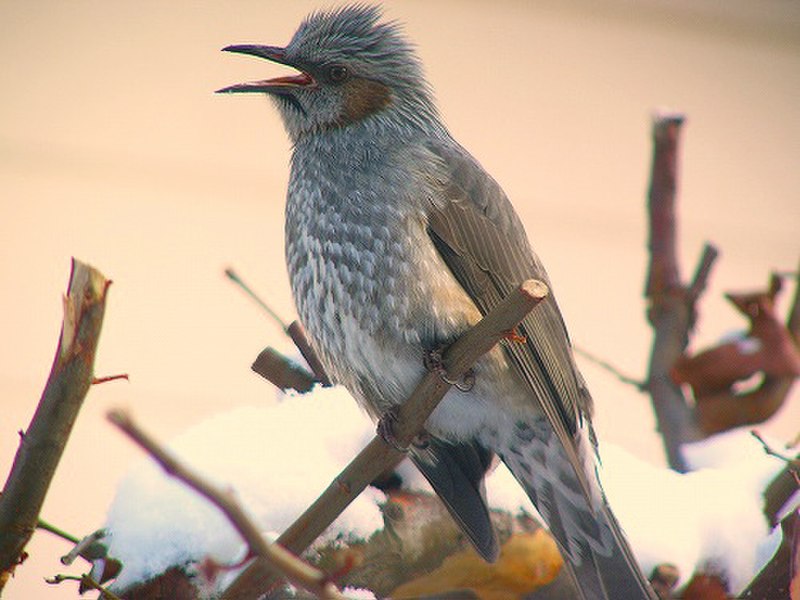
Bulbuls are a medium-sized passerine songbird family native to Africa, the Middle East and tropical Asia up until Japan. They can also be found on some of the Indian Ocean islands.
There are 160 species within 32 genera in this family which includes greenbuls, brownbuls, leafloves and bristlebills.
Bulbul birds have been known for their beautiful singing voices as well as for being very active during mating season when they gather together to create large flocks where potential mates can show off their skills.
The coloration of bulbuls range from dull greys or browns to vibrant yellows with black markings around the head region making them quite attractive creatures indeed.
Scientific classification:
| Kingdom | Animalia |
| Phylum | Chordata |
| Class | Aves |
| Order | Passeriformes |
| Parvorder | Sylviida |
| Family | Pycnonotidae Gray, GR, 1840 |
10. Drongos
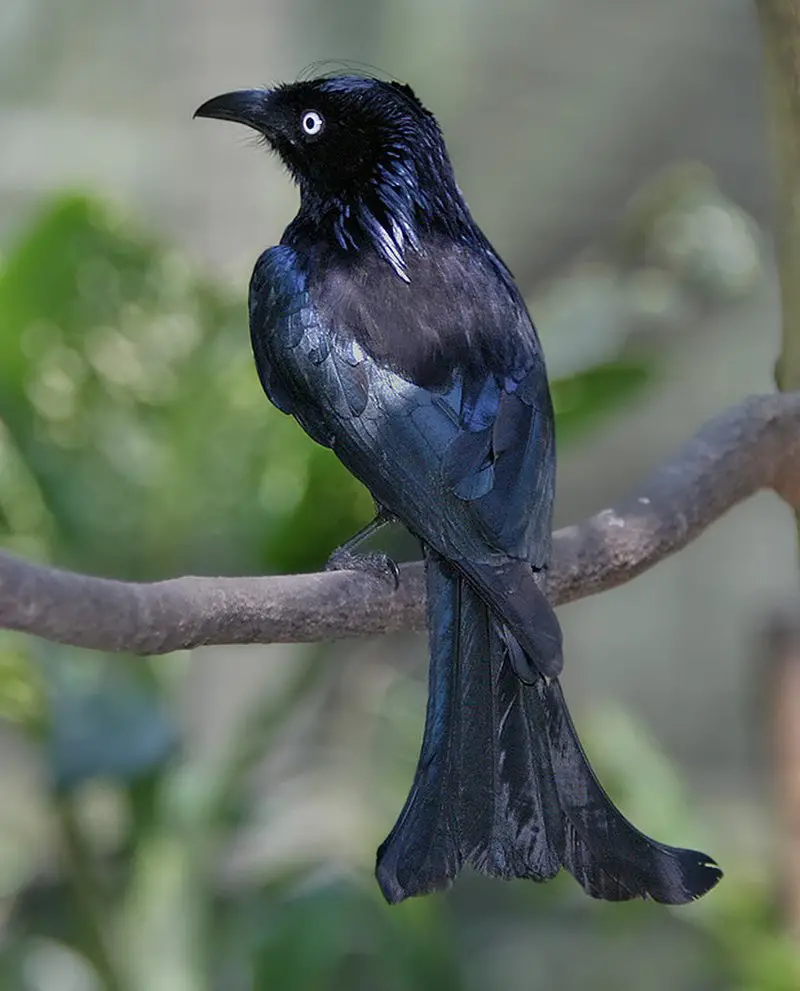
Drongos are an Old World tropical family of passerine birds belonging to the Dicruridae genus.
They have short legs, forked tails and a distinctive upright stance when perched.
Depending on the species they may be mostly black or dark grey in colour with some having elaborate tail decorations.
Drongos feed mainly on insects and small birds – catching them both in flight and from the ground.
They also sometimes eat fruit, nectar and even carcasses.
The drongo’s unique adaptations make it one of nature’s most successful hunters; able to survive almost anywhere in their natural range across Africa, Asia & Australia.
Scientific classification:
| Kingdom | Animalia |
| Phylum | Chordata |
| Class | Aves |
| Order | Passeriformes |
| Superfamily | Corvoidea |
| Family | Dicruridae Vigors, 1825 |
| Genus | Dicrurus Vieillot, 1816 |
Also Featured In: Common Uzbekistan Birds, Native Birds of Kazakhstan
11. Eurasian Reed Warbler
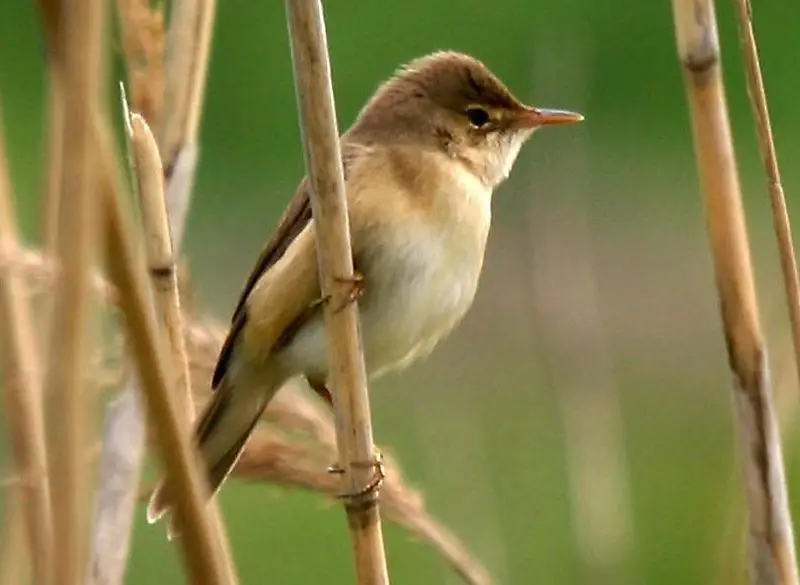
The Eurasian reed warbler (Acrocephalus scirpaceus) is a species of Old World Warbler native to the temperate parts of Europe and Asia.
It breeds in wetlands such as marshes, ponds and rivers with dense vegetation like reeds or tall grasses.
During its wintering season, it migrates southward to sub-Saharan Africa where there are milder conditions.
This small bird has streaked brown plumage on the upperparts and white underparts which makes it difficult for predators to spot among the foliage.
Its diet consists mainly of insects including aphids, caterpillars larvae and moths caught while flying over water or by gleaning from plants growing near water bodies.
The male sings an attractive song consisting of several phrases repeated one after another as part of their courtship display during breeding season in order attract females for mating purposes.
Scientific classification:
| Kingdom | Animalia |
| Phylum | Chordata |
| Class | Aves |
| Order | Passeriformes |
| Family | Acrocephalidae |
| Genus | Acrocephalus |
| Species | A. scirpaceus |
12. Old World Orioles
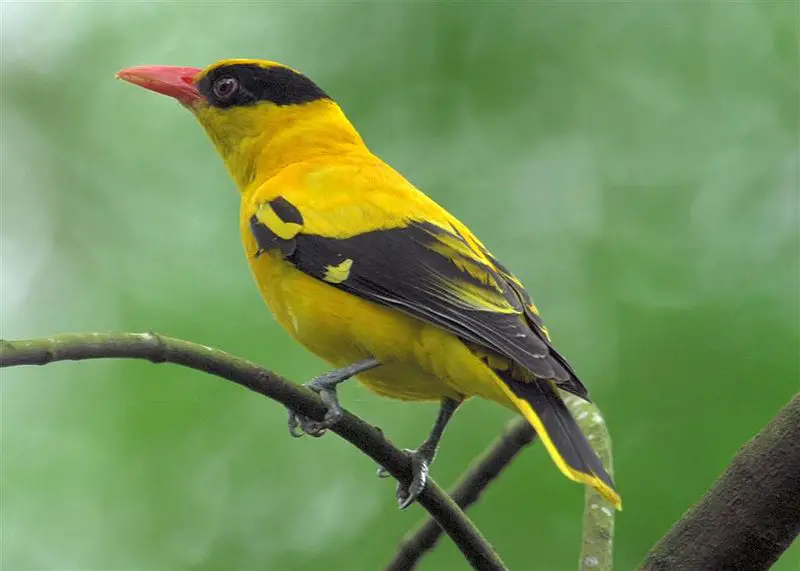
Old World orioles are a family of passerine birds found in the Old World. It comprises four genera: piopios, figbirds, pitohuis and the original genus Oriolus.
The African black-headed species have sometimes been removed from this latter group due to their distinct characteristics as well as other proposed splits for Oriolus.
These colorful birds can be identified by their bright yellow or orange plumage that often features darker markings on wings and head areas, although some species may also display a blue hue or stripes across the body feathers.
They typically feed on insects such as caterpillars and grasshoppers but will supplement with small fruits when available too – making them beneficial additions to gardens.
Scientific classification:
| Kingdom | Animalia |
| Phylum | Chordata |
| Class | Aves |
| Order | Passeriformes |
| Superfamily | Orioloidea |
| Family | Oriolidae Vigors, 1825 |
13. Laughingthrushes
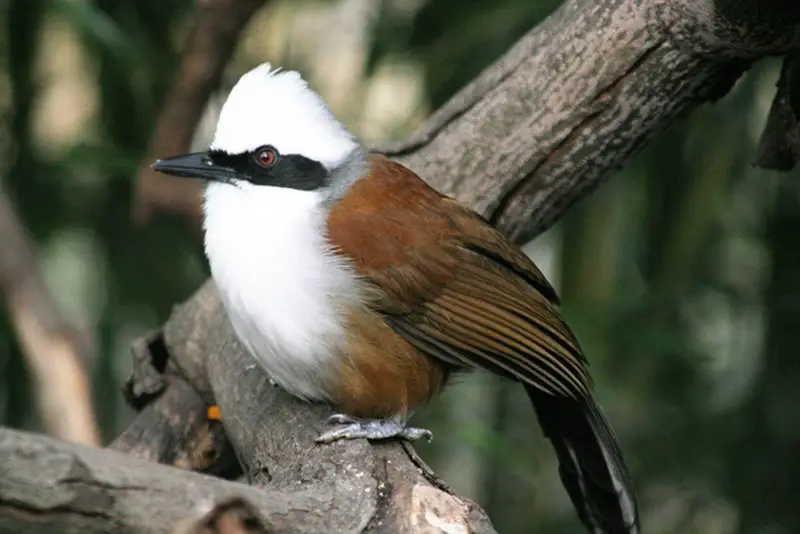
Laughingthrushes are a family of passerine birds found in tropical areas, primarily Southeast Asia and the Indian subcontinent.
They vary greatly in size and coloration but generally they have strong legs and many species are terrestrial or semi-terrestrial.
These birds typically inhabit forests where they feed on insects, fruits, seeds and occasionally small vertebrates.
The diet varies depending on the species as some prefer to forage among foliage while others look for food along the forest floor or take it from trees high up in their habitat.
In general these active creatures live in flocks that can range from just a few individuals to large groups with dozens of members making them quite vocal at times.
Scientific classification:
| Kingdom | Animalia |
| Phylum | Chordata |
| Class | Aves |
| Order | Passeriformes |
| Superfamily | Sylvioidea |
| Family | Leiothrichidae Swainson, 1832 |
14. Herons
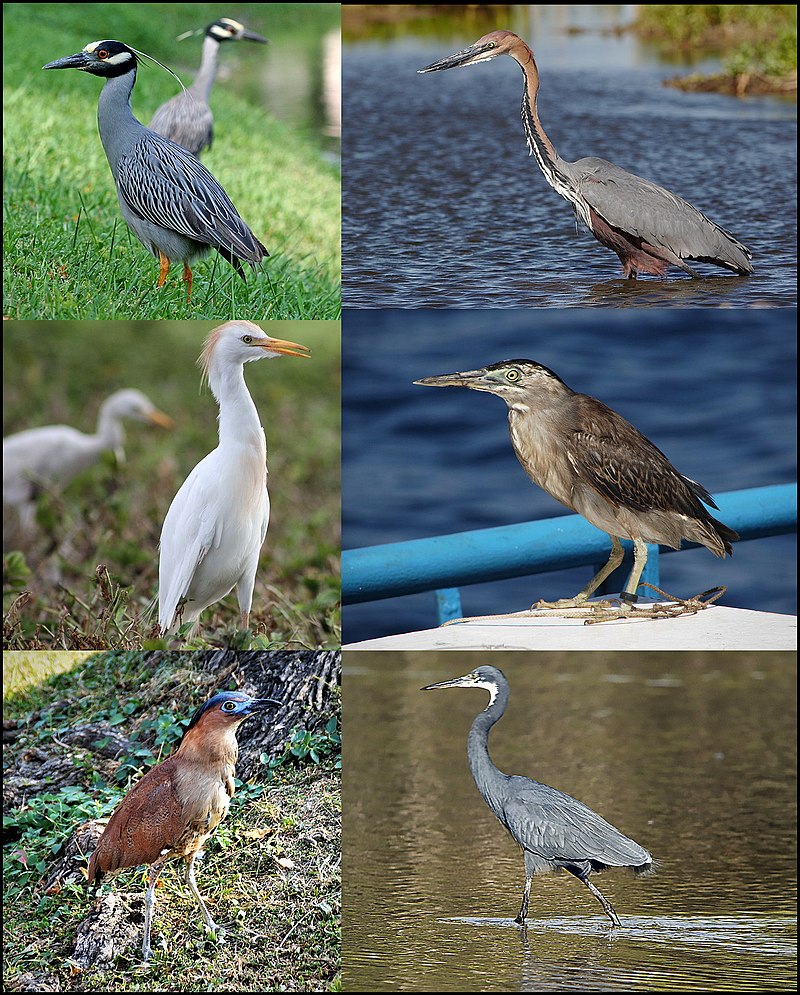
Herons are graceful and elegant birds belonging to the family Ardeidae, with 72 distinct species.
They have long legs and necks that are well-adapted for wading in shallow water like streams or ponds.
Herons can be found near freshwaters as well as along coastal areas worldwide.
Some of these species may also be referred to as egrets, bitterns or zigzag heron/bittern because they belong to certain genera such as Botaurus and Ixobrychus respectively.
These birds stand tall when searching for food by standing still in a shallow body of water while waiting patiently until prey appears before quickly capturing it with their sharp bills.
Scientific classification:
| Kingdom | Animalia |
| Phylum | Chordata |
| Class | Aves |
| Order | Pelecaniformes |
| Suborder | Ardei |
| Family | Ardeidae Leach, 1820 |
15. Falcon
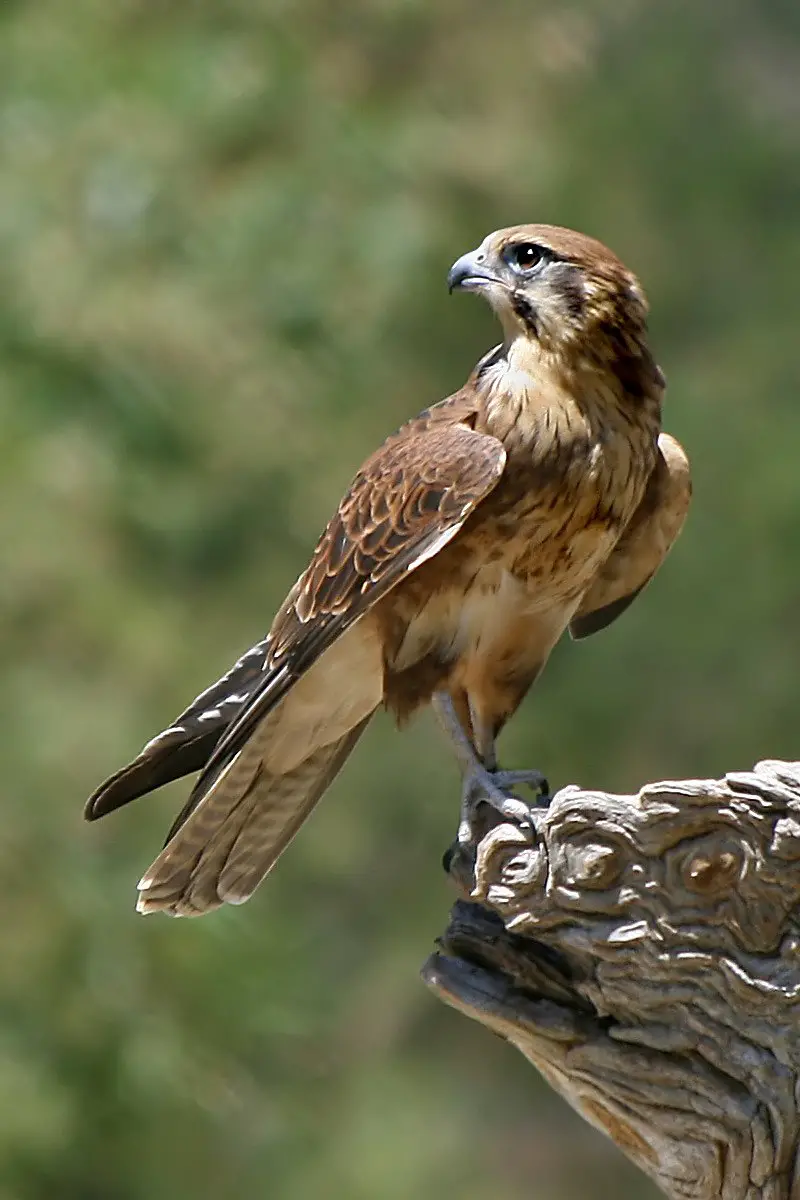
Falcons are majestic birds of prey found in almost all parts of the world, except Antarctica. They have long, slender wings that allow them to fly swiftly and change directions quickly.
As adults they feed on small animals such as mice and insects, but when young their diet consists mainly of carrion or food provided by their parents.
Falcons use a range of techniques for hunting including hovering high up above potential prey before diving down at great speed to catch it during flight.
Additionally they also ambush unsuspecting victims from concealed perches close to the ground.
These remarkable hunters can even take advantage of thermal currents rising off warm surfaces like roads which give them an extra boost while flying.
Scientific classification:
| Kingdom | Animalia |
| Phylum | Chordata |
| Class | Aves |
| Order | Falconiformes |
| Family | Falconidae |
| Subfamily | Falconinae |
| Genus | Falco Linnaeus, 1758 |
16. Caracaras
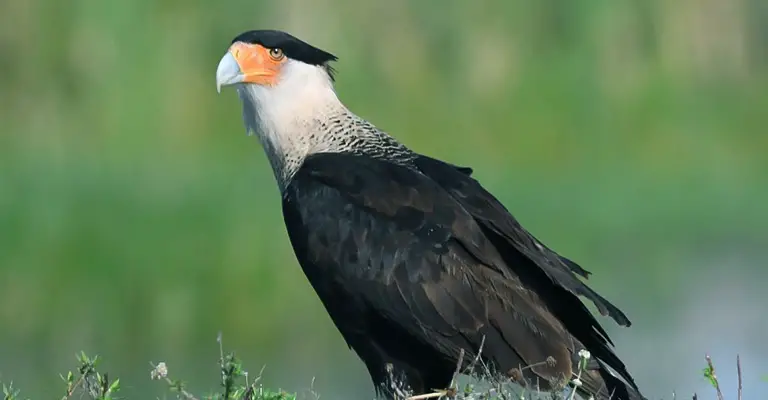
Falcons and caracaras are birds of prey that belong to the family Falconidae. They have impressive sharp talons, hooked beaks and keen eyesight which makes them excellent hunters.
Falcons can reach speeds up to 200 mph when diving for their prey while caracaras use a combination of running and flying to hunt small mammals such as rabbits or rats.
Both falcons and caracaras live in various areas around the world from grasslands, deserts, forests, wetlands or even urban areas where they nest on cliffs or tall buildings.
The diet mainly consists insects but also includes larger animals like reptiles or other birds which they catch by surprise with fast dives out of the sky.
Scientific classification:
| Kingdom | Animalia |
| Phylum | Chordata |
| Class | Aves |
| Order | Falconiformes |
| Family | Falconidae Leach, 1820 |
17. Bee-Eater

Bee-eaters are one of the most beautiful and vibrant birds in existence. They have a slender body, long wings, down turned bills and their signature elongated central tail feathers which make them instantly recognizable from afar.
Their plumage is incredibly colorful with many shades ranging from blues to greens to reds that glisten when they fly through the air.
These stunning creatures can be found all over Africa, Asia, Southern Europe, Australia and New Guinea where they feed mainly on bees but also other insects like flies or wasps as well as small mammals such as lizards or rodents.
Bee-eaters live in colonies near rivers or wetlands so that they may easily hunt for food while staying close together for safety purposes.
Additionally it allows them to better display their impressive courtship dances during mating season.
Scientific classification:
| Kingdom | Animalia |
| Phylum | Chordata |
| Class | Aves |
| Order | Coraciiformes |
| Family | Meropidae Rafinesque, 1815 |
18. Jacanas
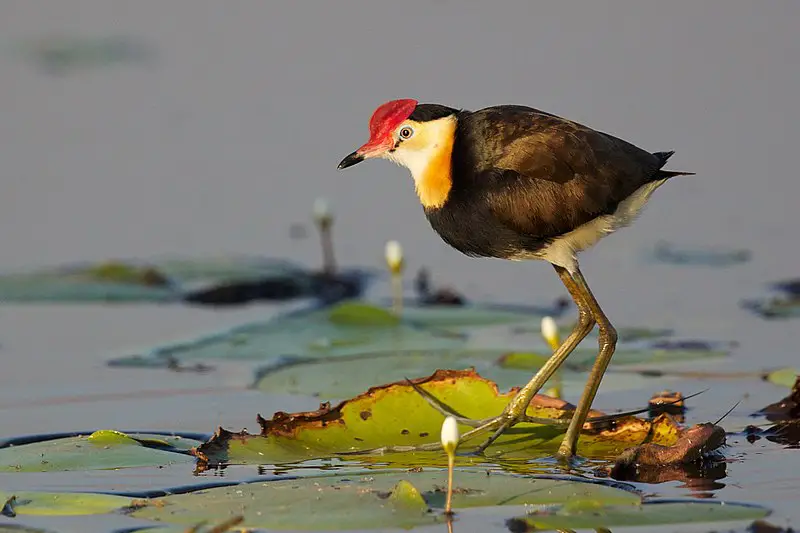
Jacanas are tropical waders belonging to the Jacanidae family. They have distinctive elongated toes and toenails which help them forage on floating or semi-emergent aquatic vegetation.
This adaptation gives them their nickname “Jesus birds” as they seem to be able to walk on water.
The female jacanas are also unique amongst bird species in that they take charge of nest building, incubation and caring for young while males perform courtship displays.
These unusual birds can be found throughout the world’s tropical regions where they inhabit wetlands such as swamps, marshes and shallow lakes with lily pads.
With a wide variety range due their special adaptations these beautiful creatures will surely continue living life at ease around our planet’s warmest waters.
Scientific classification:
| Kingdom | Animalia |
| Phylum | Chordata |
| Class | Aves |
| Order | Charadriiformes |
| Suborder | Thinocori |
| Family | Jacanidae Stejneger, 1885 |
19. Stone-Curlew

Stone-curlews, also known as dikkops or thick-knees, are a family of birds that have adapted to live in tropical and temperate regions throughout the world.
They can be found in Africa, Asia and Australia with two or more species per region. Despite being classified as waders, most prefer dry arid habitats over moist wetlands.
Stone-curlews typically have long legs which help them navigate through their preferred terrain efficiently; some species even stand at an impressive height when standing on those long legs.
Additionally they feature cryptic plumage which helps them blend into their surroundings while hunting for prey such as insects and small mammals like rodents.
These unique bird’s calls are easily recognizable; it has been said that hearing one is similar to listening to someone whistling ‘Keee Weee’.
Scientific classification:
| Kingdom | Animalia |
| Phylum | Chordata |
| Class | Aves |
| Order | Charadriiformes |
| Suborder | Chionidi |
| Family | Burhinidae Mathews, 1912 |
20. Painted-Snipe
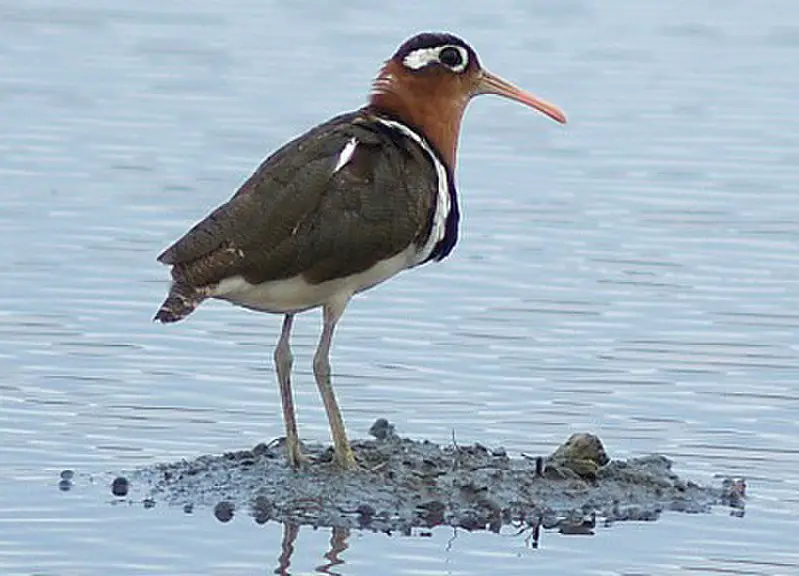
Painted snipes are beautiful and unique wading birds found in the Rostratulidae family. They have short legs, long bills, and a striking plumage which distinguishes them from true snipes.
Males tend to be smaller than females with duller overall coloration. There are three species of painted snipe.
The Greater Painted Snipe, Lesser Painted Snipe, and Australian Painted Snipe – all three have different habitats ranging from wetland pools to grasslands or mangroves depending on their region.
These birds feed mainly on earthworms but also consume insects, crustaceans and plant material when available.
As they rely heavily on wetlands for breeding purposes it is important that we protect these precious habitats so that this special bird can continue to thrive.
Scientific classification:
| Kingdom | Animalia |
| Phylum | Chordata |
| Class | Aves |
| Order | Charadriiformes |
| Suborder | Thinocori |
| Family | Rostratulidae Coues, 1888 |
21. Threskiornithidae
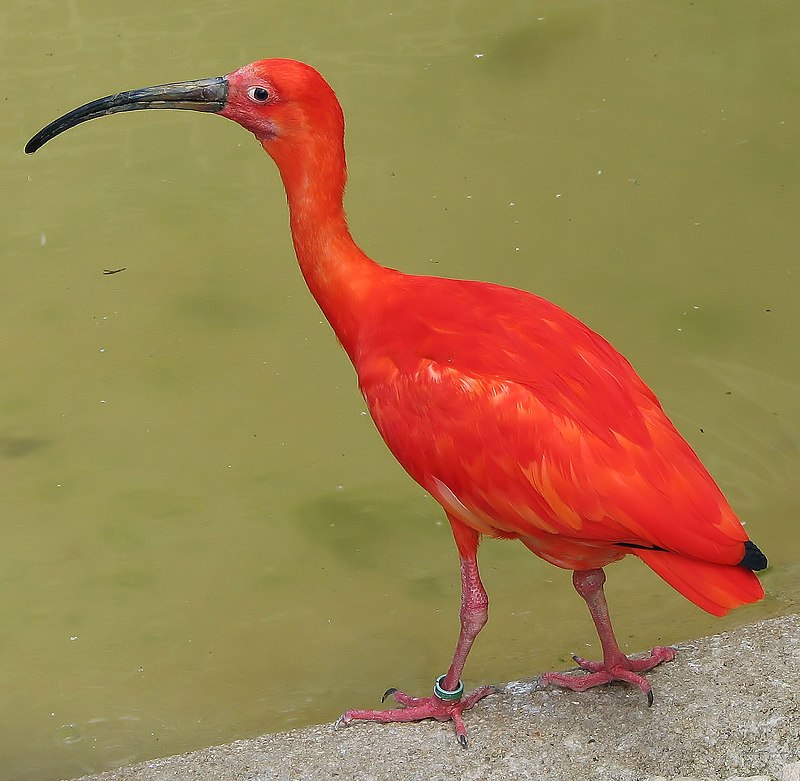
Threskiornithidae is a family of large wading birds which includes 36 species. These birds are traditionally divided into two subfamilies – the ibises and the spoonbills.
However, recent genetic analysis has shown that spoonbills actually belong to Old World ibis group, while New World ibises form an early offshoot from this lineage.
Threskiornithidse members have long curved beaks with serrated edges used for catching fish in shallow water or mudflats, as well as other aquatic invertebrates like crustaceans and mollusks.
They also feed on plant matter such as grains and seeds found close to wetlands areas where they live.
This diverse diet makes them important scavengers in their ecosystems, helping maintain healthy populations of native wildlife by controlling insect numbers and dispersing energy-rich seeds throughout wetland habitats.
Scientific classification:
| Kingdom | Animalia |
| Phylum | Chordata |
| Class | Aves |
| Order | Pelecaniformes |
| Suborder | Ardei |
| Family | Threskiornithidae Richmond, 1917 |
22. Northern Storm Petrels
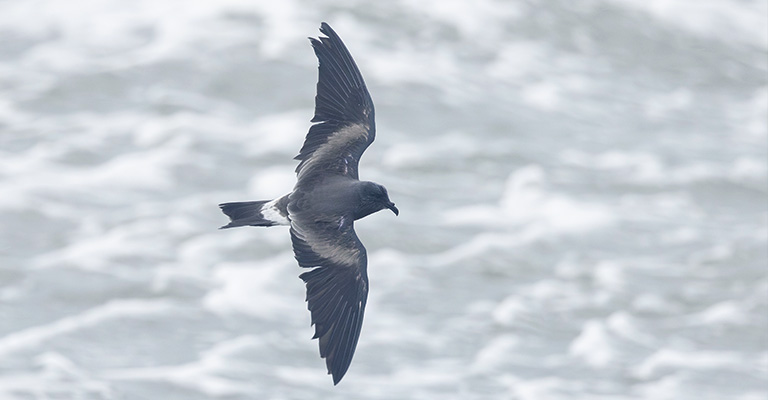
Northern storm petrels are one of the smallest seabirds, inhabiting oceans all over the world.
They have a unique ability to hover over water and pick planktonic crustaceans and small fish from the surface.
Northern storm petrels belong to the genus Hydrobates in family Hydrobatidae, part of Procellariiformes order.
This species was once lumped with austral storm petrel but recent studies show that they weren’t related closely which led them being split into two distinct species now.
These birds can be identified by their dark grey upperparts and wings along with white underparts when seen from afar while feeding on ocean’s surface.
Scientific classification:
| Kingdom | Animalia |
| Phylum | Chordata |
| Class | Aves |
| Order | Procellariiformes |
| Family | Hydrobatidae Mathews, 1912 |
| Genus | Hydrobates F. Boie, 1822 |
23. Procellariidae
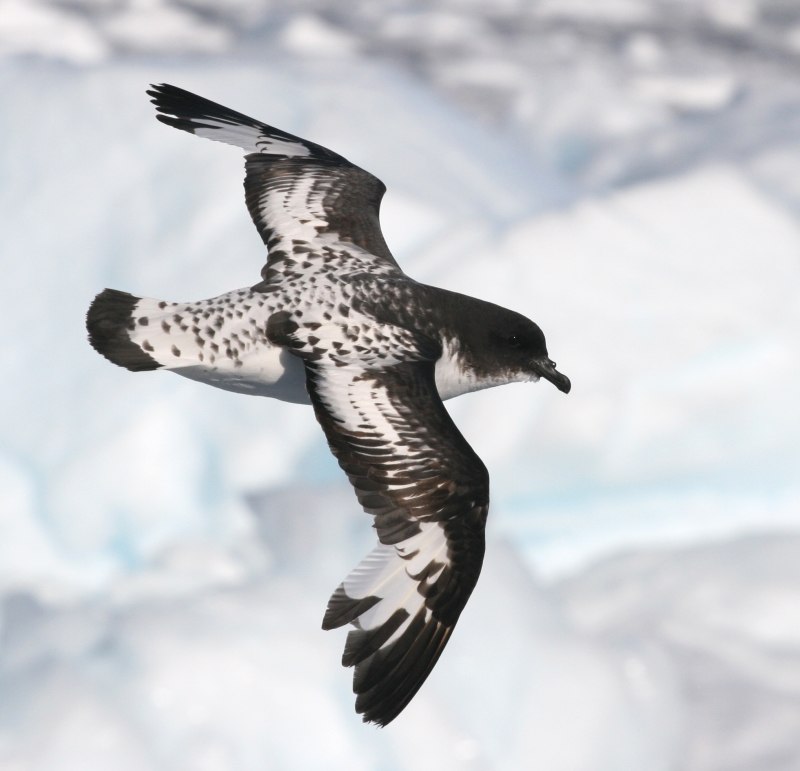
Procellariidae is a diverse family of seabirds belonging to the bird order Procellariiformes.
These birds are commonly referred to as tubenoses and include fulmarine petrels, gadfly petrels, diving petrels, prions, and shearwaters.
They range in size from the small storm-petrel which measures around 18cm long to the giant albatross which can reach up to 3 meters in length.
Generally found near oceans or coasts where they feed on fish as well as squid and other marine life depending on species.
Many procellariids will also nest inland during breeding season before returning back out at sea for most of their lives.
Their wings have specially adapted feathers that give them incredible gliding abilities allowing them literally fly with minimal effort over vast distances across oceanic regions
Scientific classification:
| Kingdom | Animalia |
| Phylum | Chordata |
| Class | Aves |
| Order | Procellariiformes |
| Family | Procellariidae Leach, 1820 |
24. Stilts And Avocets
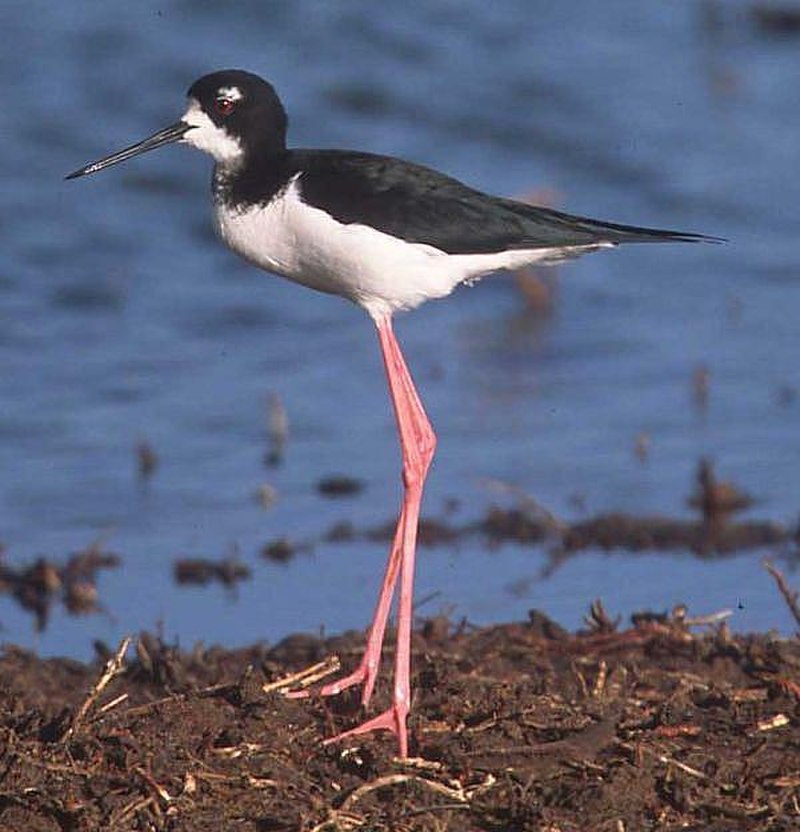
Stilts and avocets are two distinct groups of birds belonging to the family Recurvirostridae. They range in length from 30-46 cm (12-18 inches) and weigh between 140 – 435 g (4.9 – 15.3 ounces).
Males usually have slightly larger bodies than females, with long thin legs, necks and bills.
Avocet bills curve upwards uniquely while stilt beaks remain straight most times.
These wading birds live mainly near shorelines or wetlands where they feed on aquatic invertebrates like brine shrimp, insects etc., occasionally supplementing their diet with seeds or small fish too.
Stilts also inhabit open fields in search of food sources such as earthworms or grasshoppers during the non-breeding season.
Both groups migrate over large distances for warmer weathers when it gets cold outside.
Scientific classification:
| Kingdom | Animalia |
| Phylum | Chordata |
| Class | Aves |
| Order | Charadriiformes |
| Suborder | Charadrii |
| Family | Recurvirostridae Bonaparte, 1854 |
25. Glareolidae
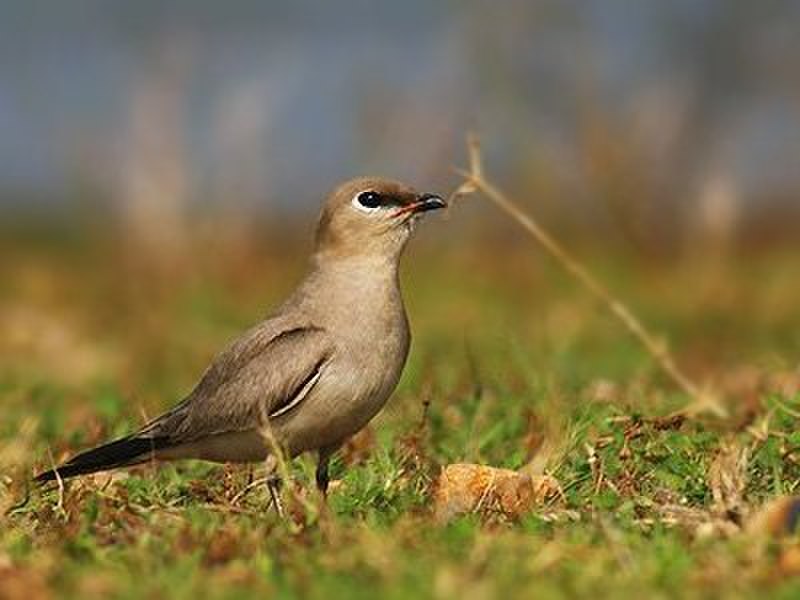
Glareolidae is a family of wading birds, consisting of four genera and 17 species. They are distinguished from other charadrii by their long bills which have a slight downward curve.
Glareolidae live around open grasslands and deserts, where they hunt for insects using the bill to probe into soil or vegetation.
Most species are found in Africa but two pratincoles inhabit parts of Europe and Asia as well.
Coursers tend to be larger than pratincoles with longer legs allowing them to run quickly across sandy dunes while feeding on small animals like lizards or spiders.
Pratincoles feed mainly on flying insects, snatching them out of midair with great agility during flight.
All glareolids share unique features such as large eyes that help it spot prey at night easily making this group one interesting bird family.
Scientific classification:
| Kingdom | Animalia |
| Phylum | Chordata |
| Class | Aves |
| Order | Charadriiformes |
| Suborder | Lari |
| Family | Glareolidae CL Brehm, 1831 |
26. Acrocephalidae
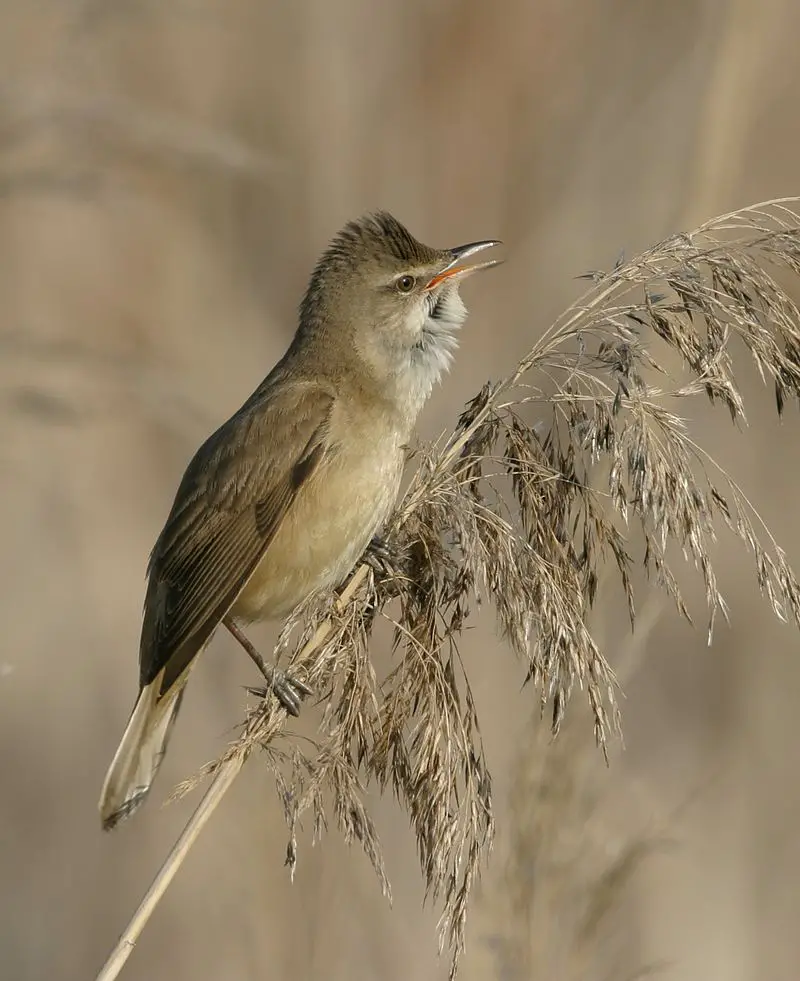
The Acrocephalidae, commonly known as reed warblers, marsh- and tree-warblers or acrocephalid warblers are a family of passerine birds belonging to the superfamily Sylvioidea.
These birds typically have an olivaceous brown top with yellowish to beige underside. They can mostly be spotted in open woodlands, reed beds or tall grasses.
This family comprises about 130 species spread across Eurasia and Africa which includes some vagrant species too.
Most of these bird families feed on insects like spiders, beetles etc., while others also consume small fruits such as berries.
They make nests close to ground level by weaving twigs together using their saliva for binding them making it waterproof enough so that eggs stay safe from rainwater during breeding season.
Scientific classification:
| Kingdom | Animalia |
| Phylum | Chordata |
| Class | Aves |
| Order | Passeriformes |
| Superfamily | Sylvioidea |
| Family | Acrocephalidae Salvin, 1882 |
Also Featured In: Italian Birds You Should Know, Birds That Live in Iraq
27. Phylloscopidae
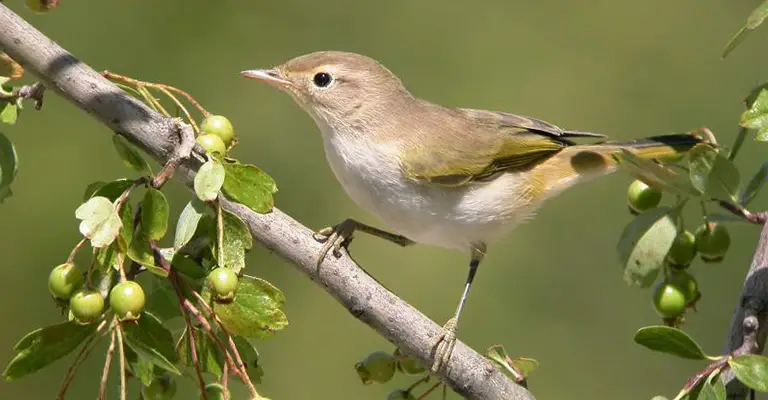
The Phylloscopidae family of birds are small to medium-sized passerines found mainly in Eurasia, with some species breeding as far east as Japan.
They have typically dull greenish or brown upperparts and yellowish underparts, a stout bill and relatively short legs.
Species range from 9–18 cm (3.5–7 inches) long and weigh between 6–30 grams (0.2 – 1 ounce).
Some species also have distinctive white stripes on the face or wings that can help identify them in the field. Their diet consists mainly of insects but they will also eat fruit when available.
The majority of these birds nest high up in trees, often near water sources such as rivers or lakes where there is plenty of food for their young chicks to feed upon once hatched
28. Austral Storm Petrels
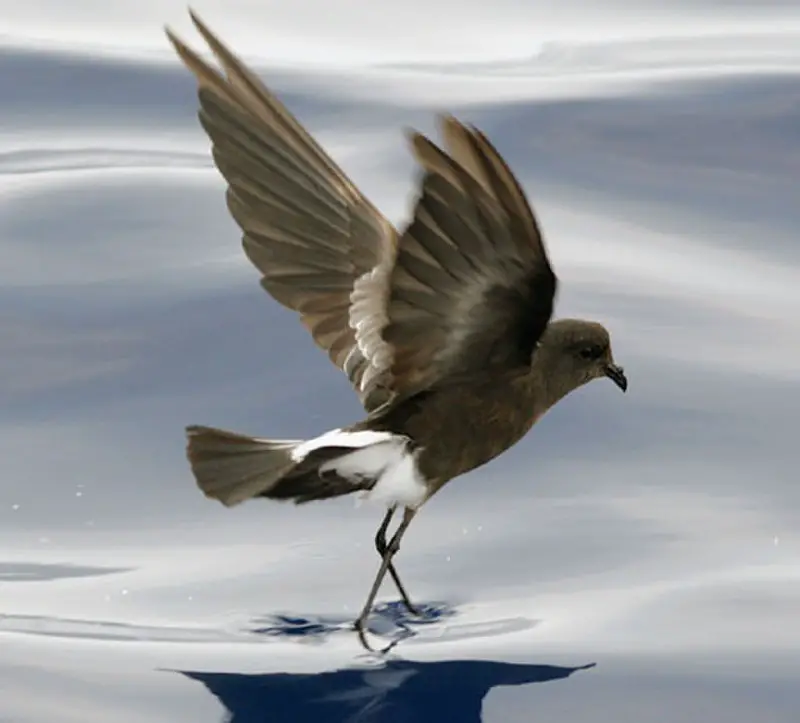
Austral Storm Petrels are the smallest of seabirds, belonging to the family Oceanitidae and order Procellariiformes.
They have a cosmopolitan distribution across all oceans, with their flight being fluttering and sometimes bat-like in appearance.
These birds feed on planktonic crustaceans as well as small fish that they pick from the surface while hovering over it.
Their plumage is mostly dark grey or blackish brown above; underparts may be white or mottled gray.
The feet vary between species but usually have pale yellow webs and claws which help them move easily through water when searching for food.
Austral storm petrels often make nests on remote islands where these birds can breed safely without any disturbances from humans during their nesting season.
Scientific classification:
| Kingdom | Animalia |
| Phylum | Chordata |
| Class | Aves |
| Order | Procellariiformes |
| Family | Oceanitidae Forbes, 1881 |
29. Psittaculidae
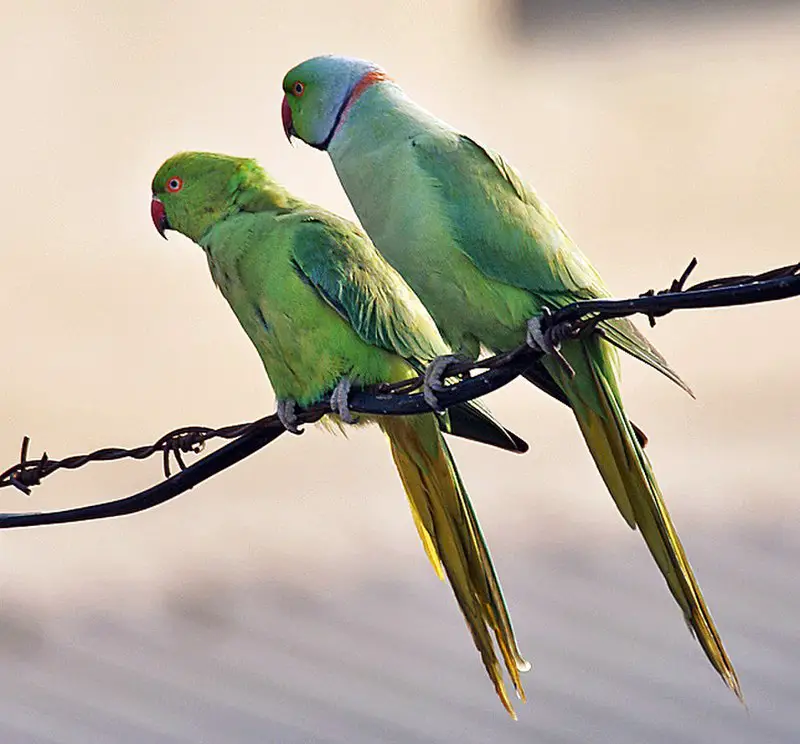
Psittaculidae is a family of Old World parrots that consists of five subfamilies. It includes 192 species divided into 53 genera, and has been accepted by the Clements Checklist of Birds as well as IOC World Bird List.
These birds are known for their bright colours, strong beaks and powerful vocalisations. They can also mimic human sounds including words when taught properly with patience and consistency.
They live in warm climate regions such as Africa, Asia Pacific Islands, Australia and Oceania where they enjoy plentiful food sources like fruits, nuts and seeds in abundance.
Psittaculids are typically found living in groups or pairs instead of alone because they enjoy socialising with others from within their own kind.
Scientific classification:
| Kingdom | Animalia |
| Phylum | Chordata |
| Class | Aves |
| Order | Psittaciformes |
| Superfamily | Psittacoidea |
| Family | Psittaculidae Vigors, 1825 |
30. Socotra Cormorant
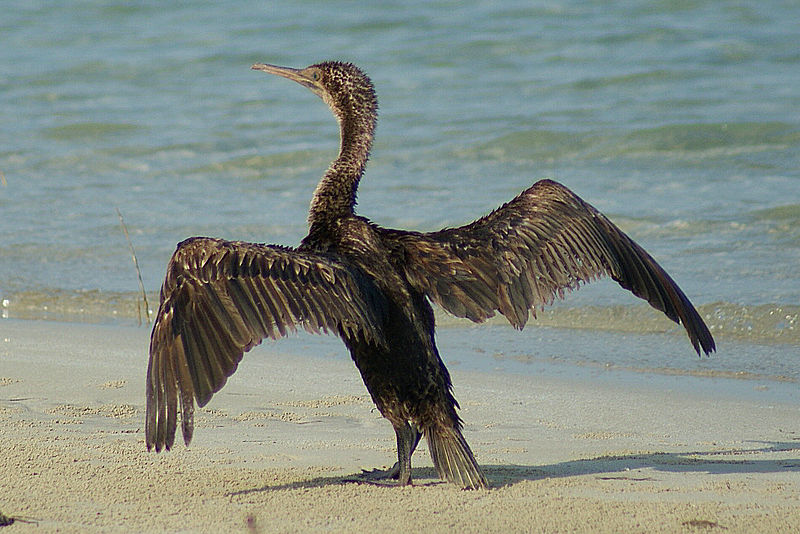
The Socotra cormorant is a threatened species of bird endemic to the Persian Gulf and south-east coast of the Arabian Peninsula. It has also been sighted in the Red Sea, although it is not known to breed there.
The bird has grey feathers with white patches on its wings, neck and tail tip. Its beak and throat are black while its face and legs are yellowish-white.
Despite being named for Socotra Island (Yemen), where it used to live before becoming endangered due to hunting, nesting destruction by humans and predation by feral cats; it was only confirmed in 2005 that this species breeds here again today.
Scientific classification:
| Kingdom | Animalia |
| Phylum | Chordata |
| Class | Aves |
| Order | Suliformes |
| Family | Phalacrocoracidae |
| Genus | Phalacrocorax |
| Species | P. nigrogularis |
31. Saker Falcon
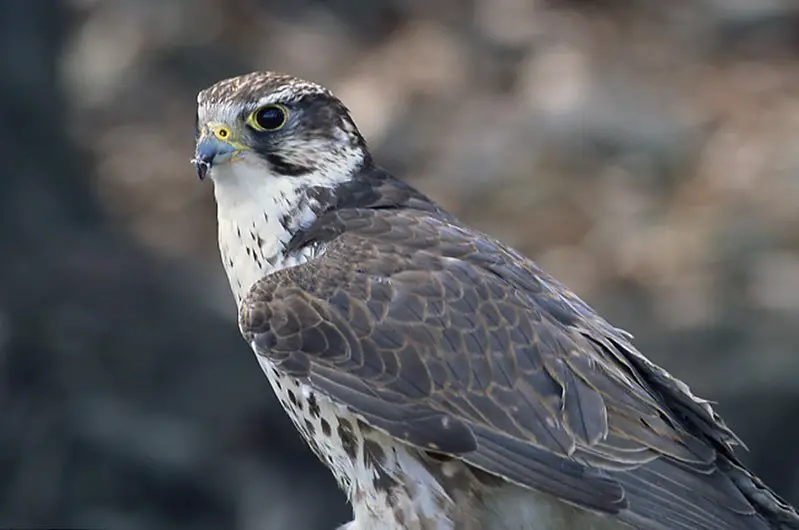
The saker falcon is a large species of falcon that is found across the Palearctic from central Europe all the way to Manchuria.
It typically migrates, except for in southern parts of its range where it winters in Ethiopia, Arabia, northern Pakistan and China.
This majestic bird has been designated as the national bird of Hungary, United Arab Emirates and Mongolia due to its beauty and gracefulness.
Its plumage can be brownish-grey or light grey with dark spots while they have bright yellow eyes which contrast their feathers beautifully.
They are also quite agile when flying at high speeds with wingspan ranging between 1-1.5 m long – perfect for soaring.
Scientific classification:
| Kingdom | Animalia |
| Phylum | Chordata |
| Class | Aves |
| Order | Falconiformes |
| Family | Falconidae |
| Genus | Falco |
| Subgenus | Hierofalco |
| Species | F. cherrug |
32. Coraciiformes
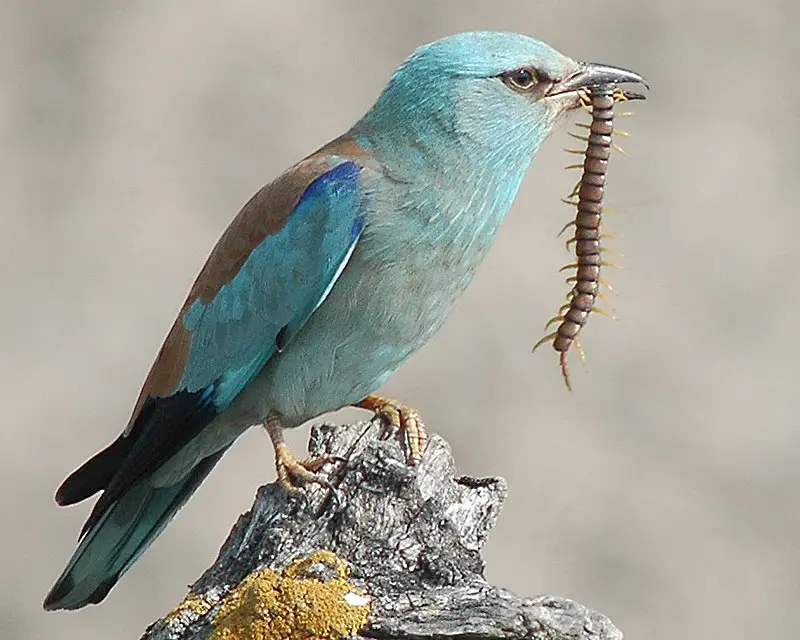
Coraciiformes birds are a group of beautiful and vibrant species, including kingfishers, bee-eaters, rollers, motmots and todies. They have syndactyly feet with three forward pointing toes (with their third and fourth fused at the base).
However in some kingfisher species one toe is absent. This order of bird has an interesting behavior known as ‘slamming’ which links them all together.
These amazing creatures can be seen across many parts of the world from forests to deserts.
Their colorful feathers make them stand out amongst other birds making sure they don’t go unnoticed.
Scientific classification:
| Kingdom | Animalia |
| Phylum | Chordata |
| Class | Aves |
| Clade | Picodynastornithes |
| Order | Coraciiformes Forbes, 1884 |
33. Egyptian Vulture
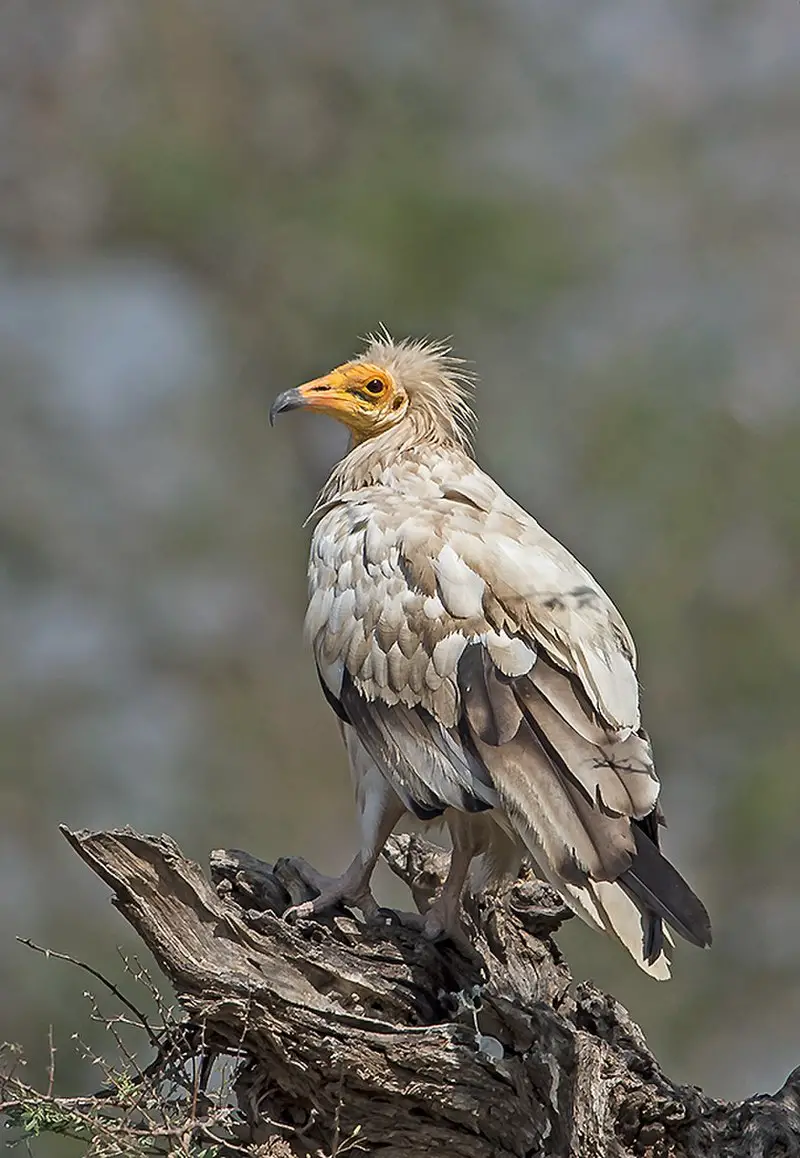
The Egyptian Vulture is a small Old World vulture known for its distinctive wedge-shaped tail and contrasting underwing pattern.
It has been found from the Iberian Peninsula through North Africa to India, making it one of the most widespread birds in that area.
This species eats mostly carrion but will also feed on eggs and small prey if they can find them. Its diet consists mainly of lizards, insects and other invertebrates as well as fruit like figs, grapes or mulberries when available.
The Egyptian Vulture plays an important role in ecosystems by helping to clean up carcasses which could otherwise spread disease or attract predators such as jackals into human settlements.
They are considered vulnerable due to threats including habitat destruction, electrocution from power lines and accidental poisoning – all factors contributing towards their decline in numbers across their range
Scientific classification:
| Kingdom | Animalia |
| Phylum | Chordata |
| Class | Aves |
| Order | Accipitriformes |
| Family | Accipitridae |
| Genus | Neophron Savigny, 1809 |
| Species | N. percnopterus |
34. Motacillidae
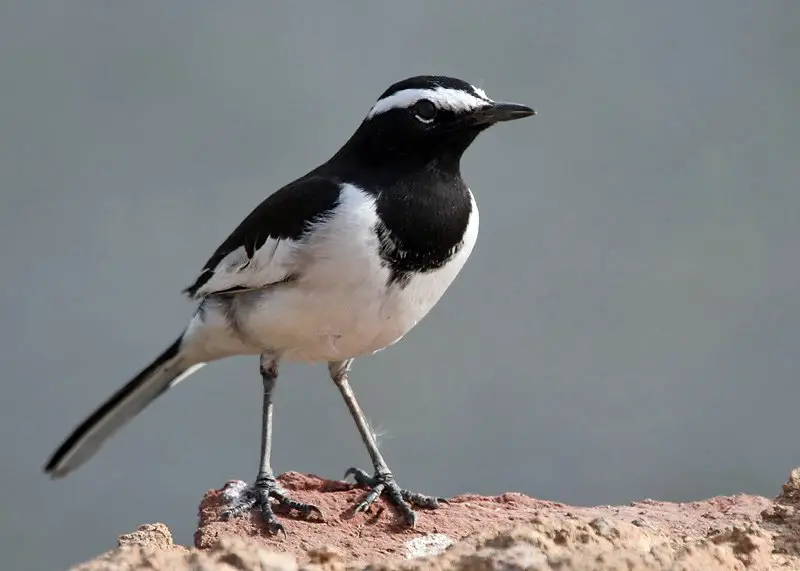
Motacillidae is a family of small passerine birds consisting of around 70 species. They are found across Europe, Africa, Asia and even Alaska with two migratory breeding species.
The three genera they belong to include wagtails which typically have medium to long tails; longclaws that can only be spotted in the Afrotropics; and pipits which possess the most cosmopolitan distribution worldwide.
These birds feed on insects as well as seeds for their diets and are usually seen in open habitats such grasslands or wetlands where food sources like invertebrates can easily be accessed.
Most Motacillidae species also use mud nests during breeding season making them easy targets for predators so it’s important we protect these beautiful creatures.
Scientific classification:
| Kingdom | Animalia |
| Phylum | Chordata |
| Class | Aves |
| Order | Passeriformes |
| Superfamily | Passeroidea |
| Family | Motacillidae Horsfield, 1821 |
35. Old World Flycatchers
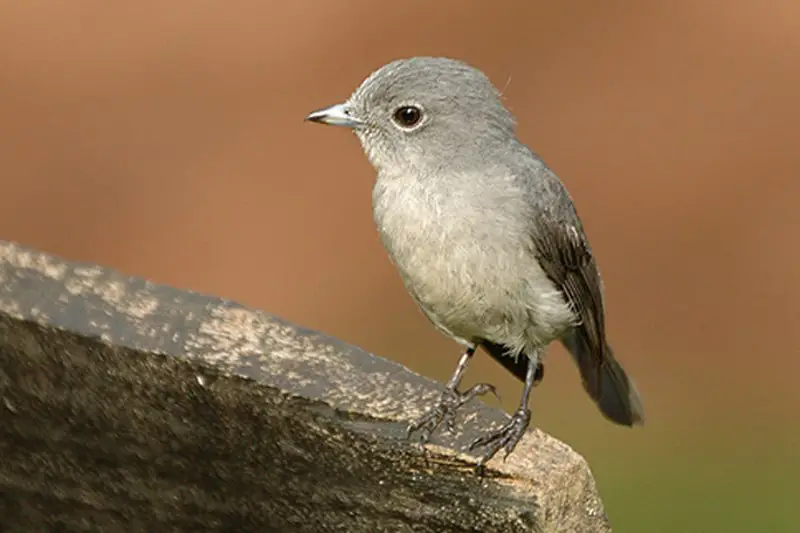
The Old World Flycatcher is a family of small passerine birds, native to Europe, Africa and Asia. They are mainly insectivorous arboreal birds that feed on insects they catch in the air or trees.
Their wingspan ranges from 5-11 inches long with males usually being slightly larger than females.
The coloration of these birds can range greatly depending on species but typically have dull greyish brown upperparts and pale undersides which help them blend into their environment for hunting purposes.
Bluethroat (Luscinia svecica) and Northern Wheatear (Oenanthe oenanthe) are two exceptions as they can be found in North America too.
These charming little creatures make fun additions to birdwatching lists all over the world because of their vibrant colors and interesting behaviors.
Scientific classification:
| Kingdom | Animalia |
| Phylum | Chordata |
| Class | Aves |
| Order | Passeriformes |
| Superfamily | Muscicapoidea |
| Family | Muscicapidae Fleming J., 1822 |
36. Sooty Falcon
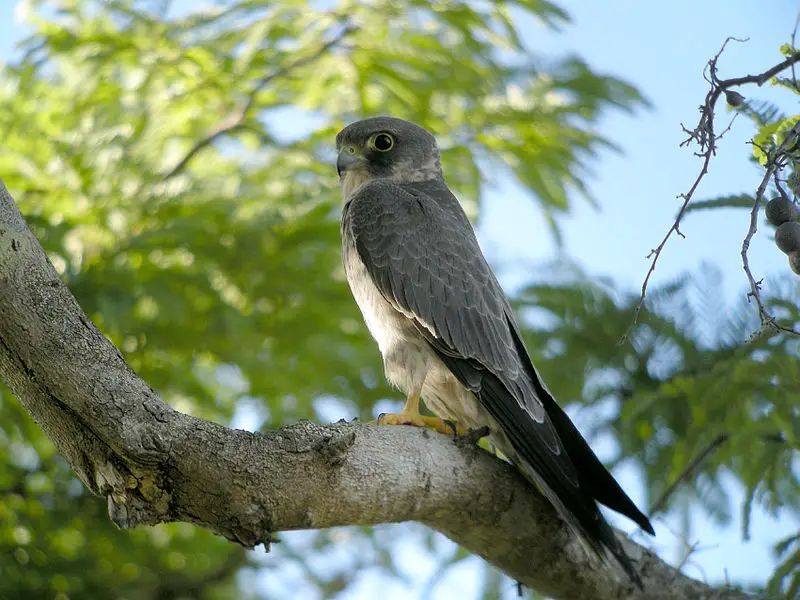
The Sooty Falcon is a medium-sized bird of prey that can be found in the arid regions of northeastern Africa and southern Persian Gulf region. The name comes from its dark soot colored plumage, which provides camouflage while hunting.
It belongs to the order Falconiformes, family Falconidae and genus Falco. This species is known for its strong flight capabilities; they often soar up high looking for their food sources such as small birds or rodents on the ground below them.
They also have sharp talons and powerful beak used to capture their prey with ease.
These raptors are an important part of local ecosystems by controlling rodent populations and providing people with opportunities for falconry sport (hunting).
In addition, due to their attractive coloring they are popular amongst birdwatchers who appreciate these majestic creatures when seen in nature.
Scientific classification:
| Kingdom | Animalia |
| Phylum | Chordata |
| Class | Aves |
| Order | Falconiformes |
| Family | Falconidae |
| Genus | Falco |
| Species | F. concolor |
37. Asian Green Bee-Eater
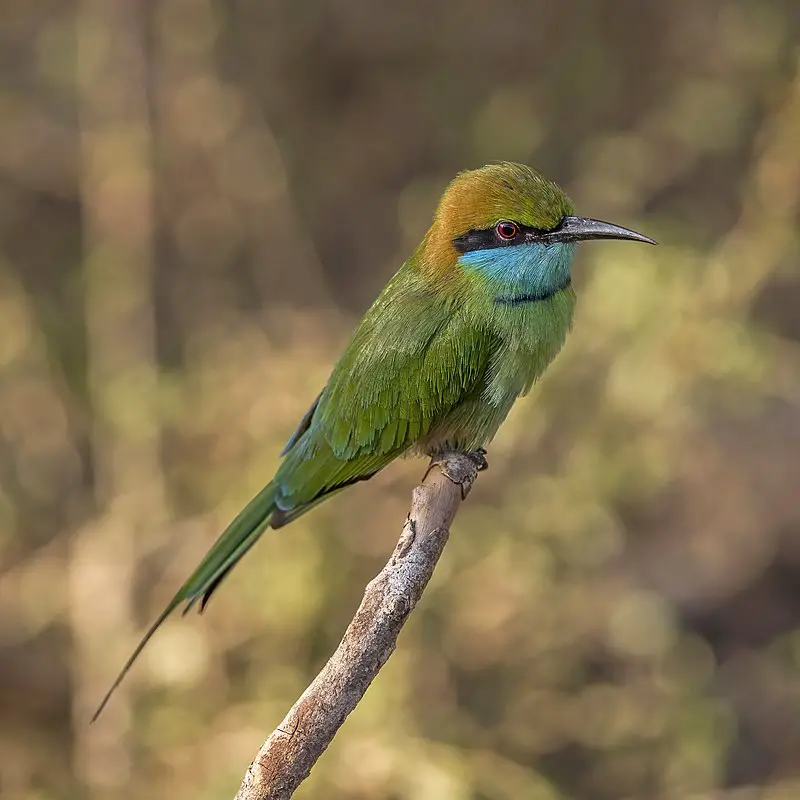
The Asian green bee-eater is a near passerine bird in the bee-eater family. It’s native to parts of Asia, stretching from Iran all the way over to Vietnam.
These birds are resident but tend to migrate seasonally and can also be found in Africa and Arabia.
They have bright green feathers on their upperparts with yellowish underparts, making them easy to spot when they’re flying around looking for insects like bees, wasps and dragonflies.
They usually nest burrows dug into sandy ground or riverbanks where they lay up to five eggs at once.
The Asian green bee-eater is an exciting species that has been popular among ornithologists since its discovery hundreds of years ago.
Scientific classification:
| Kingdom | Animalia |
| Phylum | Chordata |
| Class | Aves |
| Order | Coraciiformes |
| Family | Meropidae |
| Genus | Merops |
| Species | M. orientalis |
38. Gull-Billed Tern
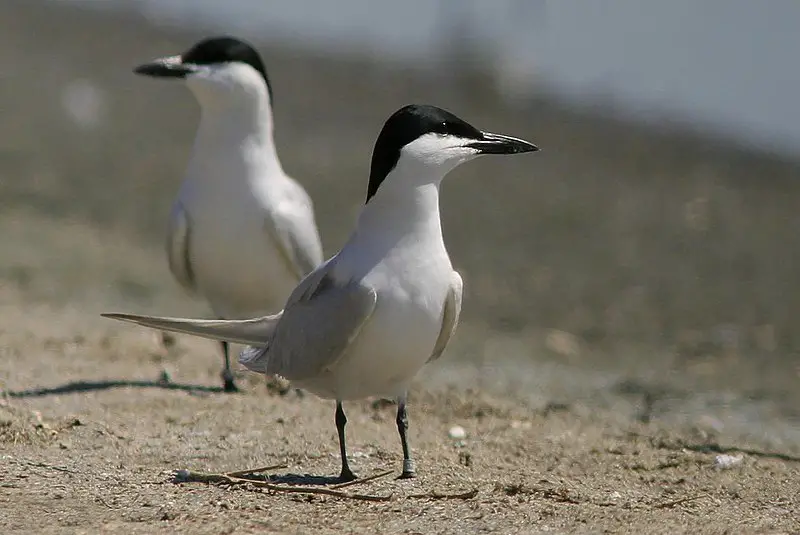
The Gull-billed Tern is a species of seabird from the Laridae family. It has an extensive range, breeding in parts of Europe, Asia, Northwest Africa and North America.
It was formally described by Johann Friedrich Gmelin in 1789 as Sterna nilotica before being reclassified to Gelochelidon nilotica.
The Australian subspecies was previously considered separate but now included with this species.
They are quite small birds measuring around 24 cm long with greyish brown upperparts throughout their body and white underneaths along with black legs and feet.
Their head also features a distinctive yellow bill which they use to hunt for fish on rivers or coasts near shallow waters where they tend to nest during summer months on ground level instead of trees like other terns do usually.
Scientific classification:
| Kingdom | Animalia |
| Phylum | Chordata |
| Class | Aves |
| Order | Charadriiformes |
| Family | Laridae |
| Genus | Gelochelidon |
| Species | G. nilotica |
39. Greater Flamingo
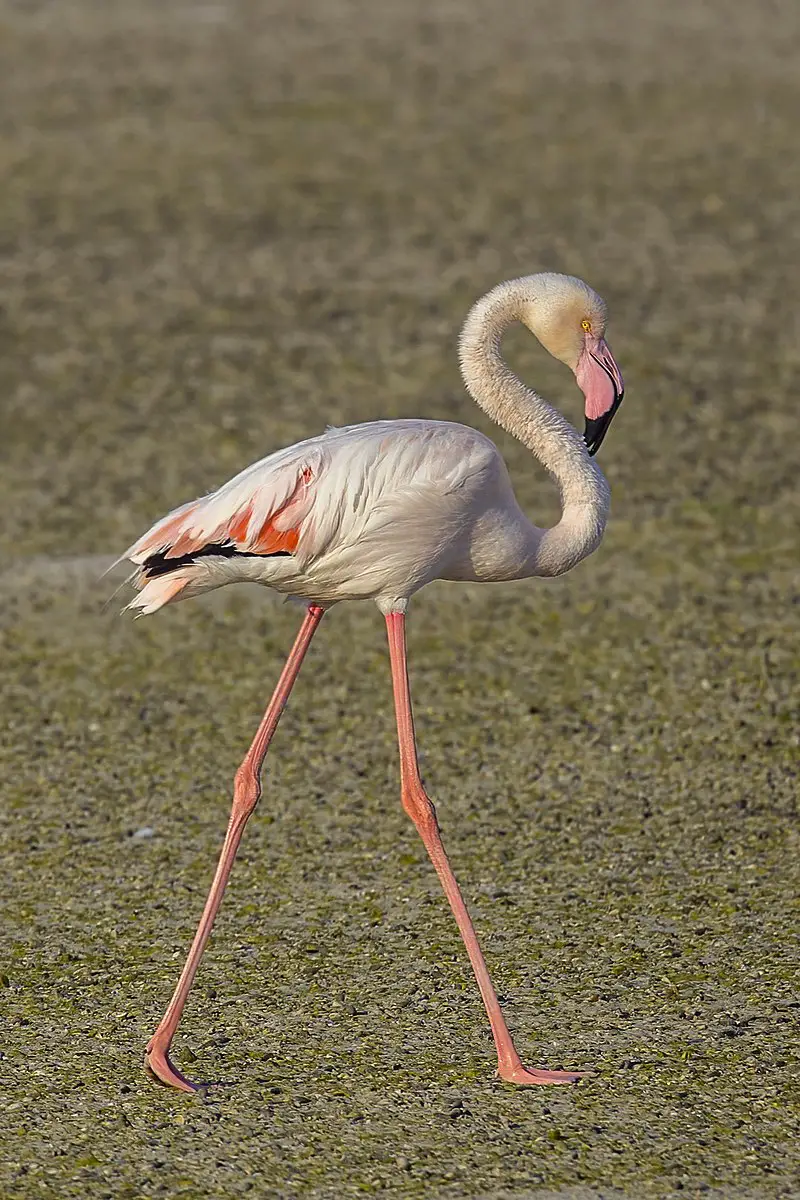
The Greater Flamingo is an impressive bird belonging to the Phoenicopteridae family. It’s one of the most widespread and largest species among flamingos with a range covering Africa, India, Middle East and southern parts of Europe.
The bird was described by Peter Simon Pallas in 1811 but it wasn’t until recently that it was distinguished from American Flamingo (Phoenicopterus ruber), due to differences in coloration between them.
This large-bodied wading bird stands tall at 1m on average and has bright pink plumage adorning its long neck and legs which gives way to black wing tips when flying.
Its diet mainly consists of algae, crustaceans as well as small aquatic animals like mollusks found while they feed along shallow lakes or lagoons where they live their social lives surrounded by others just like them.
Scientific classification:
| Kingdom | Animalia |
| Phylum | Chordata |
| Class | Aves |
| Order | Phoenicopteriformes |
| Family | Phoenicopteridae |
| Genus | Phoenicopterus |
| Species | P. roseus |
40. Black-Throated Thrush
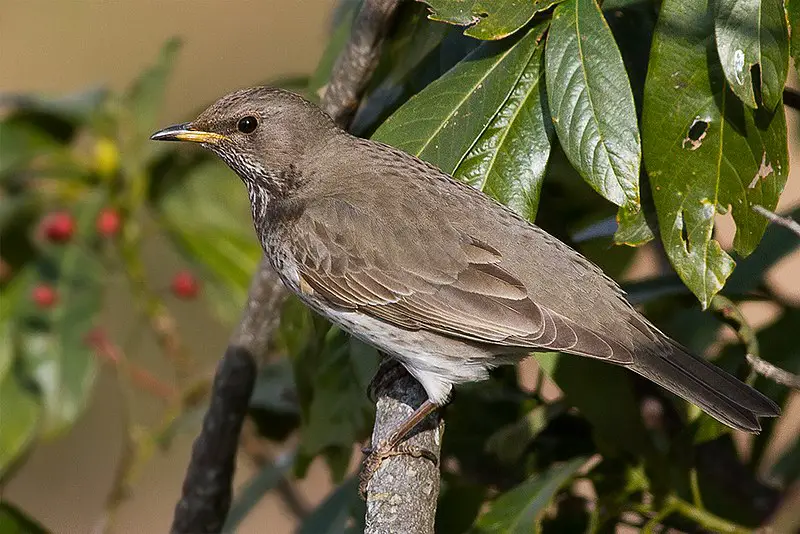
The Black-throated Thrush is a passerine bird belonging to the thrush family. It can be found in East Palearctic regions, and its range overlaps with that of the Red-throated Thrush, another member of this species.
This migratory bird has black upperparts and chest feathers, a grey head and neck, white underparts and bright yellow eyes.
During breeding season the male’s throat turns from black to brownish red whereas in females it remains dark throughout the year.
The Black-throated Thrush feeds on fruits such as berries but also eats insects for extra protein during migration journeys or when feeding young ones.
Its song is composed of beautifully fluted notes which alternate between loud bursts followed by quieter passages – a real treat for any nature lover.
Scientific classification:
| Kingdom | Animalia |
| Phylum | Chordata |
| Class | Aves |
| Order | Passeriformes |
| Family | Turdidae |
| Genus | Turdus |
| Species | T. atrogularis |
41. Siberian Stonechat
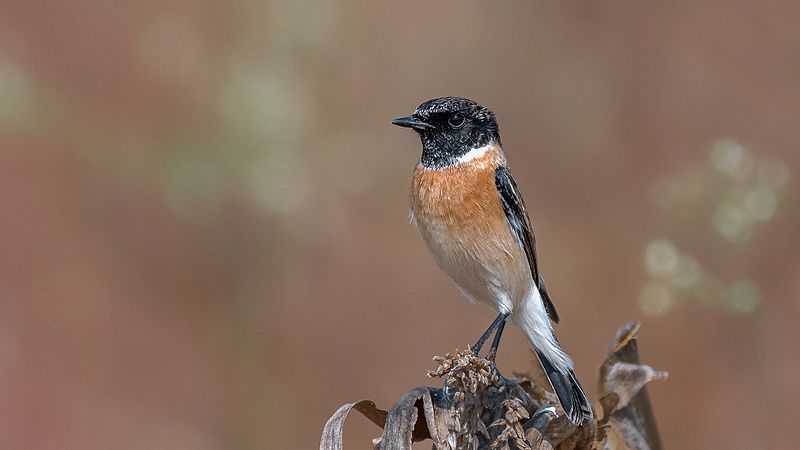
The Siberian stonechat is a species of small bird in the Old World flycatcher family. It can be found breeding across eastern Europe and parts of East Palearctic, while it winters mainly in the tropics.
In terms of appearance, this species closely resembles its closest relative – the European stonechat.
The male has an orange head with a black back and wings, whereas females are more brownish overall but still have some hints of reddish orange on their heads.
These birds feed mostly on insects which they catch by flying after them or picking from vegetation or surfaces near water bodies such as lakes and ponds.
They also eat berries when available throughout summer months to supplement their diet further.
Scientific classification:
| Kingdom | Animalia |
| Phylum | Chordata |
| Class | Aves |
| Order | Passeriformes |
| Family | Muscicapidae |
| Genus | Saxicola |
| Species | S. maurus |
Also Featured In: Gujarati Birds, Birds that Live in Faroe Islands
42. Isabelline Shrike
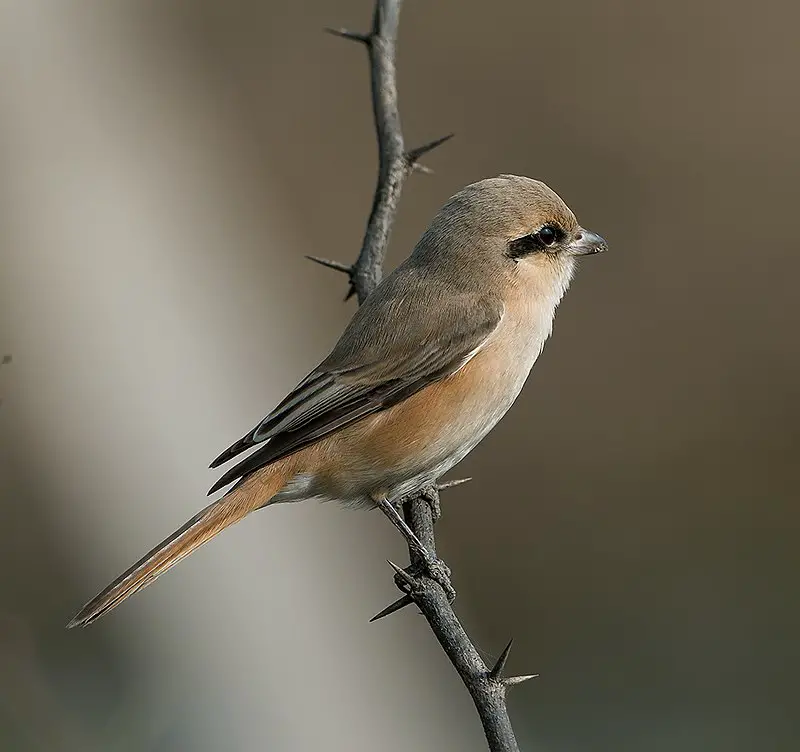
The Isabelline Shrike is a member of the shrike family, Laniidae, and was previously thought to be congeneric with the Red-backed or Red-tailed Shrikes.
It has an extensive range across many countries from Caspian Sea in Western Asia all the way eastward up to Central China’s Qaidam Basin.
During winter months it migrates southwards towards Africa and Arabia for warmer climates.
Its genus name ‘Lanius’ is derived from Latin meaning “butcher”, as its diet consists mainly of small insects and sometimes even lizards or sparrows.
The Isabelline Shrike can easily be identified by its brownish grey coloration along with black wings having white wingtips plus two white bars on each side of their tail feathers.
Scientific classification:
| Kingdom | Animalia |
| Phylum | Chordata |
| Class | Aves |
| Order | Passeriformes |
| Family | Laniidae |
| Genus | Lanius |
| Species | L. isabellinus |
Also Featured In: Common Algerian Birds , Armenian Birds You Should Know
43. Brown-Necked Raven
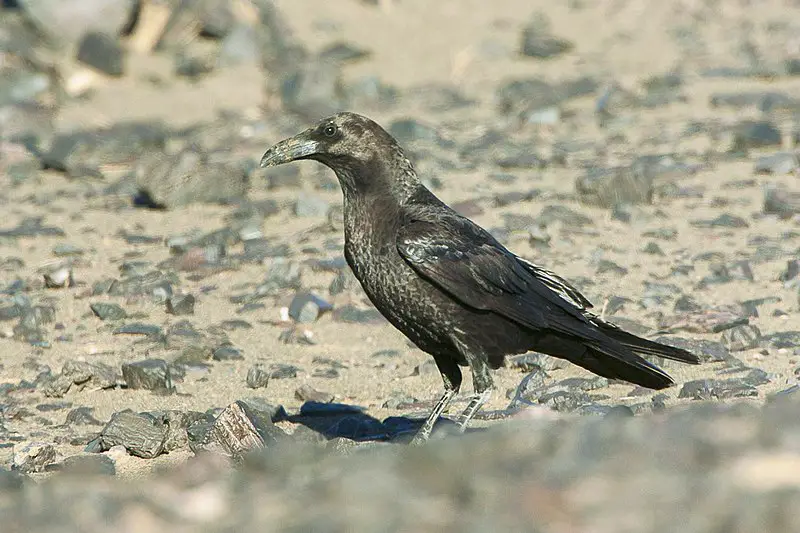
The Brown-necked Raven is a sturdy, large bird. It has an average length of 52 – 56 cm and similar proportions to the Common Raven but with a smaller bill.
Its distinct brownish black head and throat give it its name; the rest of its plumage consists of grey on the back, wings and tail feathers, as well as white underparts.
This species can be found in parts of North Africa, Asia Minor and across most areas in Iran.
They have also been known to inhabit forest edges or other open woodlands where they feed mainly on small mammals such as rodents, lizards, insects or even carrion when necessary for survival.
The Brown-necked raven is highly intelligent birds that form strong family bonds which last until death do them part.
Scientific classification:
| Kingdom | Animalia |
| Phylum | Chordata |
| Class | Aves |
| Order | Passeriformes |
| Family | Corvidae |
| Genus | Corvus |
| Species | C. ruficollis |
44. Moustached Warbler
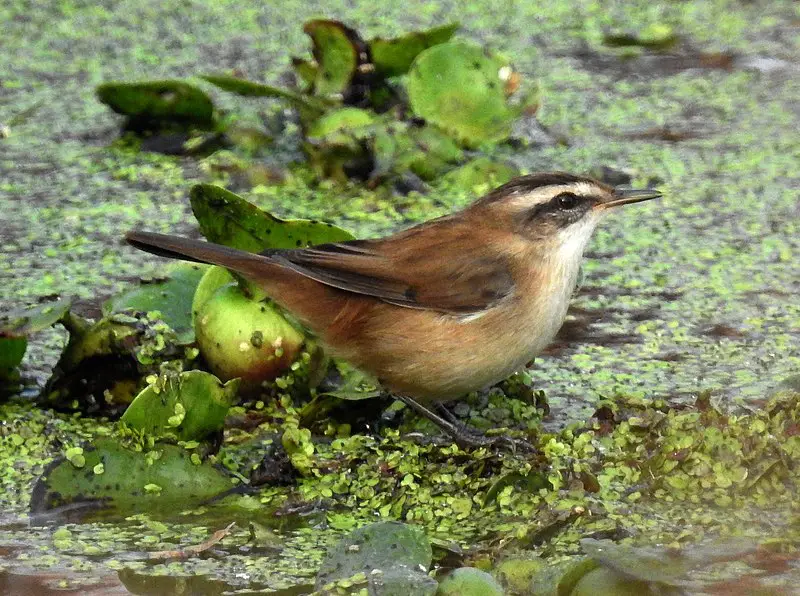
The Moustached Warbler is a species of Old World warbler found in Southern Europe, North-West Africa and parts of temperate Asia. It has distinctive facial markings that give it its name – the moustache look.
The bird can be partially migratory depending on where they breed; birds from South West Europe are resident but those from South East may travel to Mediterranean regions for winter.
Those living in Asiatic areas migrate further south to India or Pakistan during colder months.
This beautiful little songbird is pale grey with brownish upperparts and white underparts, along with an eye stripe, dark line through the eyes and black bib which all contribute to its unique look.
Scientific classification:
| Kingdom | Animalia |
| Phylum | Chordata |
| Class | Aves |
| Order | Passeriformes |
| Family | Acrocephalidae |
| Genus | Acrocephalus |
| Species | A. melanopogon |
Also Featured In: Birds Commonly Found in Slovenia, Most Popular Birds in Mallorca
45. Booted Warbler
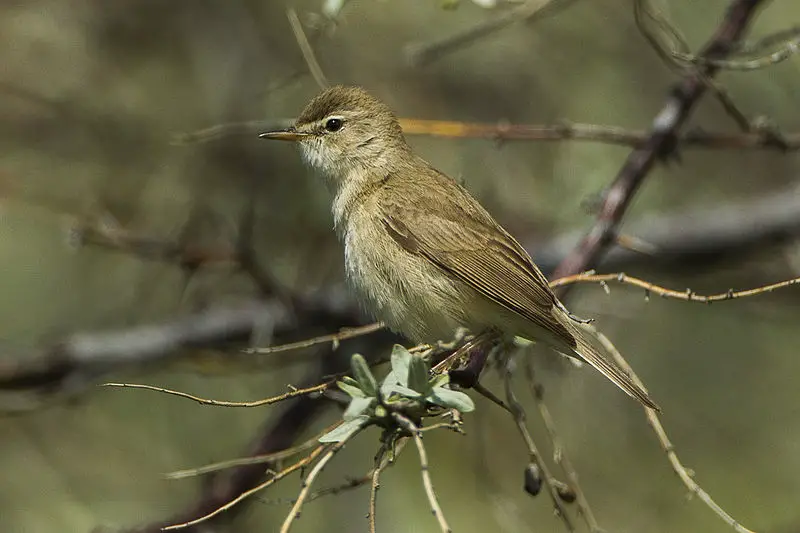
The Booted Warbler is an Old World warbler belonging to the tree warbler group.
It breeds in central Russia and western China, migrating south for wintering grounds as far away as Sri Lanka.
These small birds are mainly olive-green on top with a yellowish belly and have white patches above their eyes which give them a distinctive ‘booted’ appearance.
They feed by gleaning insects from foliage or flycatchers from midair during migration times.
Their song is composed of high-pitched trills often sung duet style between mates, making it easy to identify this species in its habitat range.
Scientific classification:
| Kingdom | Animalia |
| Phylum | Chordata |
| Class | Aves |
| Order | Passeriformes |
| Family | Acrocephalidae |
| Genus | Iduna |
| Species | I. caligata |
46. Upcher’s Warbler
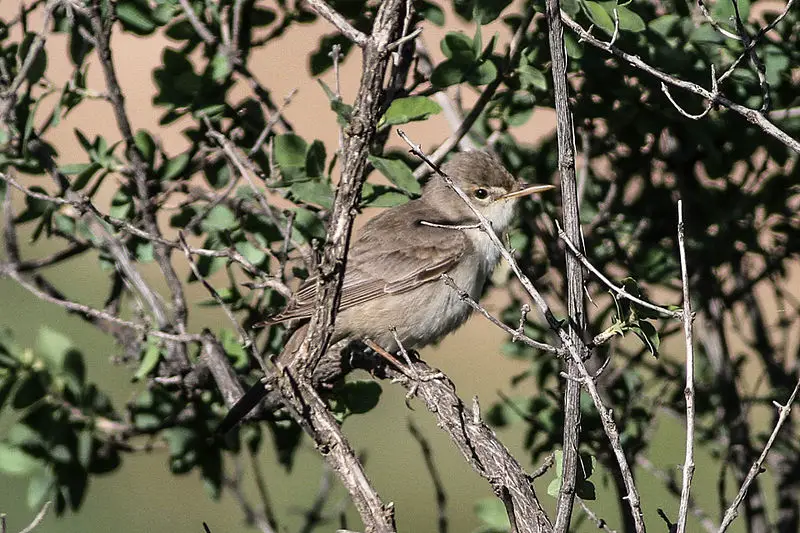
Upcher’s warbler is a small passerine bird belonging to the Old World tree warbler genus Hippolais.
It breeds in parts of Turkey, Pakistan and other countries before migrating south eastwards during winter to Eritrea, Somalia and Tanzania.
This species prefers semi-desert habitats like bushy scrubland or tamarisk thickets for nesting purposes.
During breeding season four or five eggs are laid which form part of its diet when incubated by both parents until hatching within two weeks’ time period.
Its plumage consists mainly of greyish brown colouring with an off white underside as well as a distinct black eye stripe across its face giving it quite a unique look among similar birds in the same family.
Scientific classification:
| Kingdom | Animalia |
| Phylum | Chordata |
| Class | Aves |
| Order | Passeriformes |
| Family | Acrocephalidae |
| Genus | Hippolais |
| Species | H. languida |
47. Bank Myna
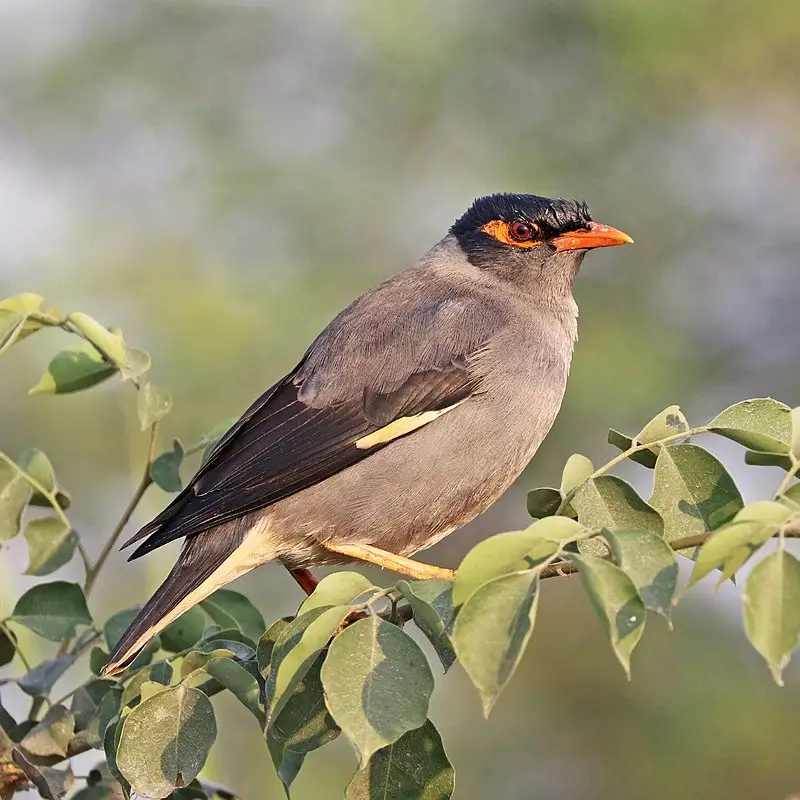
The Bank Myna is a small bird belonging to the myna family, found in the northern parts of South Asia. It has greyish brown plumage with brick-red skin behind its eyes and white feathers on its abdomen.
The most distinctive feature that sets it apart from other mynas is its tuft of feathers at the back of its head which gives it an elegant look. It usually resides in flocks, feeding mostly on fruits, grains and insects.
They also have a loud call which they use for communication among themselves as well as to ward off predators or rivals within their area.
These birds are very social creatures and can often be seen perched atop branches or flying around together in groups looking for food sources like grasslands & agricultural fields etc., making them quite popular amongst farmers who rely heavily upon these birds’ natural pest control abilities.
Scientific classification:
| Kingdom | Animalia |
| Phylum | Chordata |
| Class | Aves |
| Order | Passeriformes |
| Family | Sturnidae |
| Genus | Acridotheres |
| Species | A. ginginianus |
48. Bar-Tailed Lark
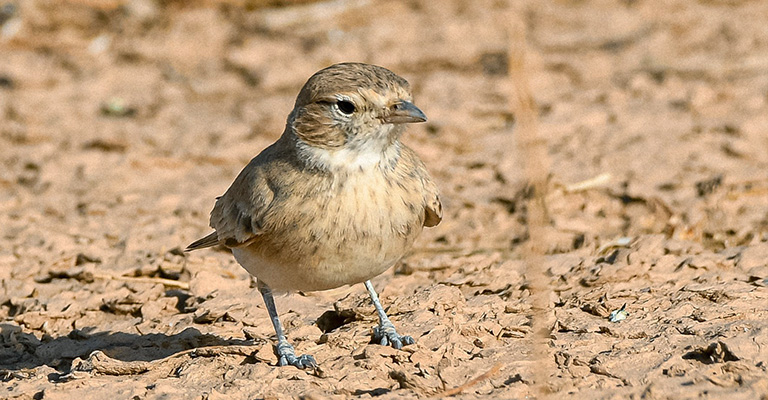
The Bar-tailed Lark is a species of lark belonging to the family Alaudidae. It is found in hot deserts from Morocco all the way to Pakistan, and can be quite common depending on its location.
Its plumage is mostly greyish brown with white patches on its wings and tail feathers. The underside has pale streaks, which vary depending upon subspecies.
They feed mainly on insects and seeds collected near ground level or sometimes plucked directly off plants while perching upright at their tips like other members of this family do when feeding.
During breeding season they form pairs that often defend small territories around their nest sites by singing loud territorial songs – making them easily recognisable birds in otherwise silent desert landscapes.
Scientific classification:
| Kingdom | Animalia |
| Phylum | Chordata |
| Class | Aves |
| Order | Passeriformes |
| Family | Alaudidae |
| Genus | Ammomanes |
| Species | A. cinctura |
49. Temminck’s Lark
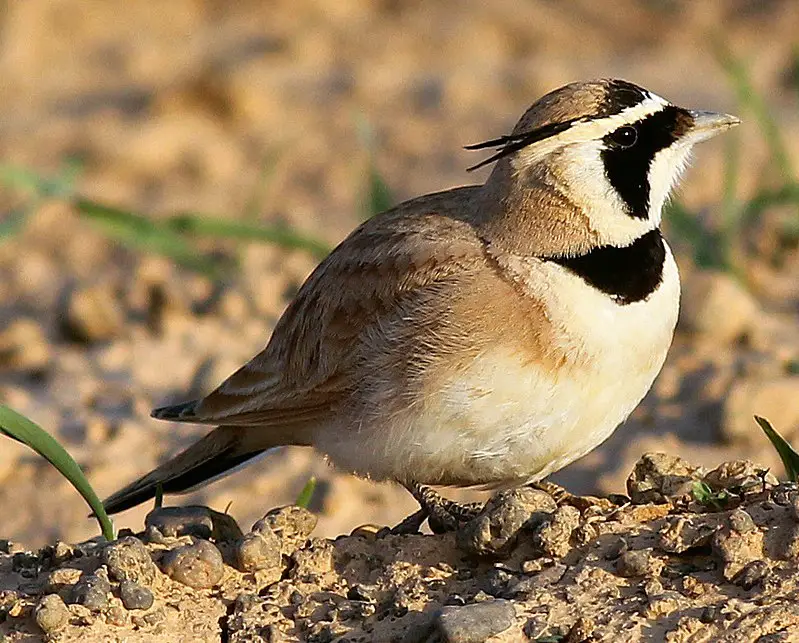
Temminck’s lark is a species of bird belonging to the Alaudidae family. It has a wide range across North Africa, northern Saudi Arabia and western Iraq.
They are mainly resident but some populations can be partially migratory, traveling south in winter for better conditions.
The name Temminck commemorates Dutch naturalist Coenraad Jacob Temminck who was well known for his work with zoology specimens in the 19th century.
This small passerine bird is brownish grey on its upperparts and white underneath with black stripes along its back making it easy to identify from other birds around it as it flies or rests among vegetation.
Its diet consists mostly of insects which they hunt while perched atop tall grasses or shrubs during daylight hours, although they may venture out at night too if food sources become scarce.
Scientific classification:
| Kingdom | Animalia |
| Phylum | Chordata |
| Class | Aves |
| Order | Passeriformes |
| Family | Alaudidae |
| Genus | Eremophila |
| Species | E. bilopha |
50. Semicollared Flycatcher
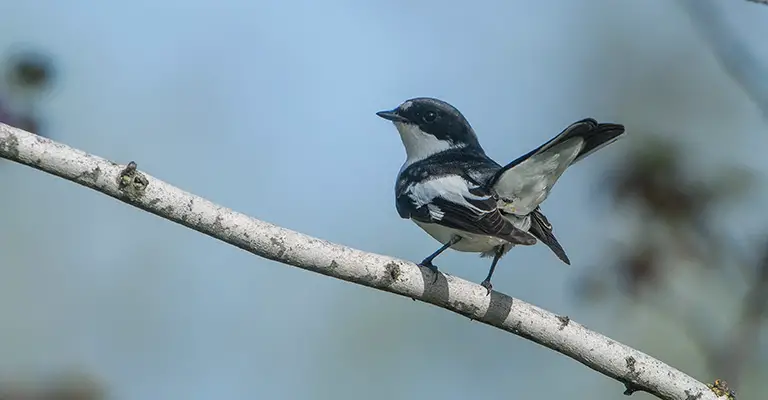
The Semicollared Flycatcher is a small passerine bird in the Old World flycatcher family, known for its unique black-and-white plumage.
It breeds primarily in montane forests of southeastern Europe and Northwest Iran, but migrates to Central and Eastern Africa during winter months.
This species has also been recorded as a rare vagrant in western Europe. Generally uncommon, it prefers open woodlands with plenty of shrubby vegetation to nest on or near the ground; they are rarely seen high up in trees unlike many other songbirds.
They feed their young mainly insects such as flies and beetles, which they catch while flying around low bushes searching for food sources.
The adults too consume these same items along with some fruits like cherries and berries when available seasonally. All considered this beautiful little bird adds character to any woodland setting.
Scientific classification:
| Kingdom | Animalia |
| Phylum | Chordata |
| Class | Aves |
| Order | Passeriformes |
| Family | Muscicapidae |
| Genus | Ficedula |
| Species | F. semitorquata |